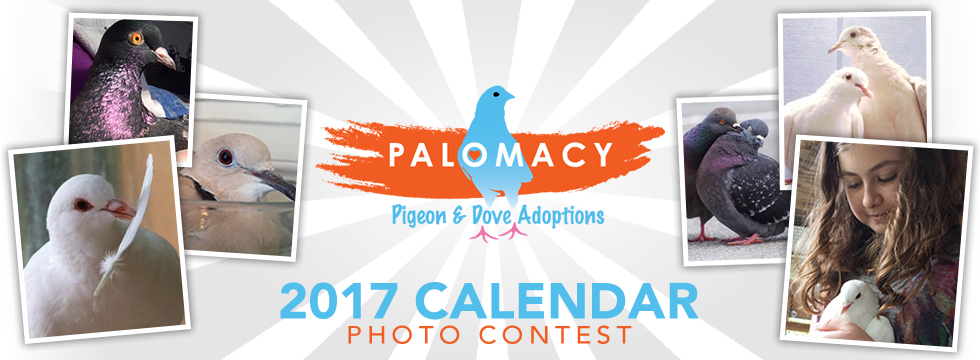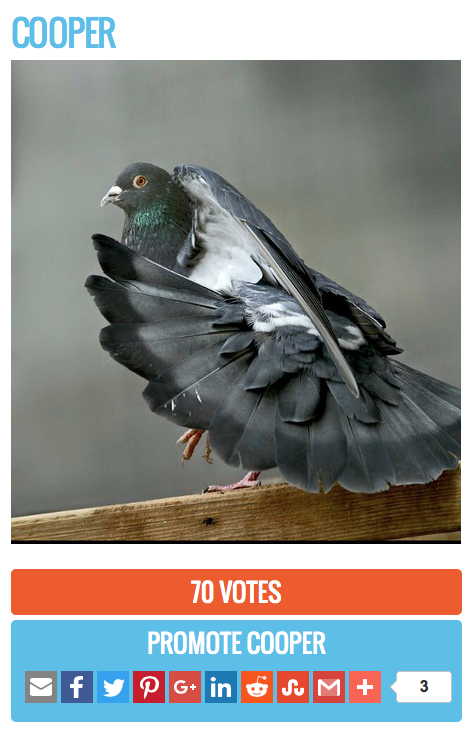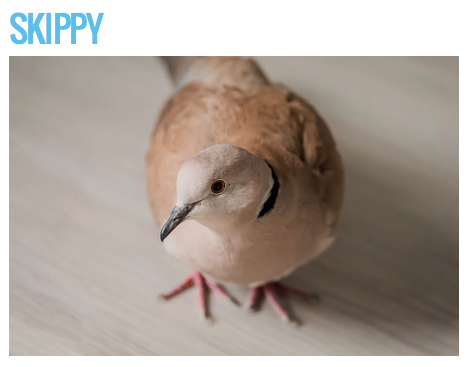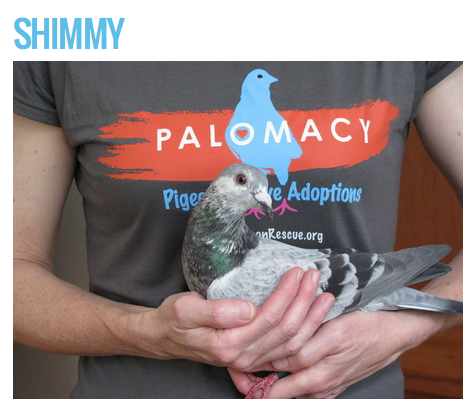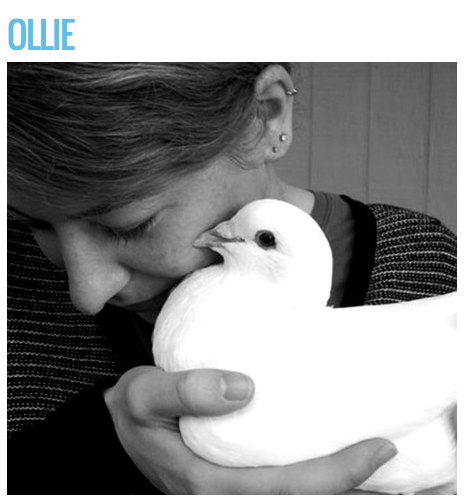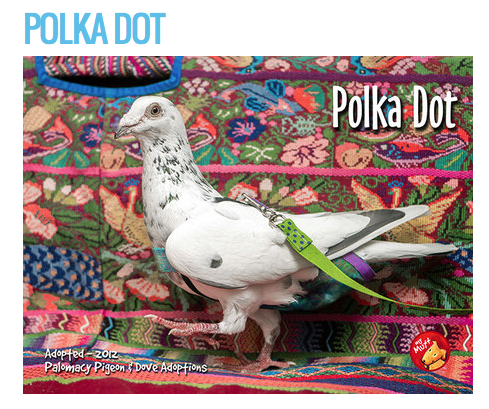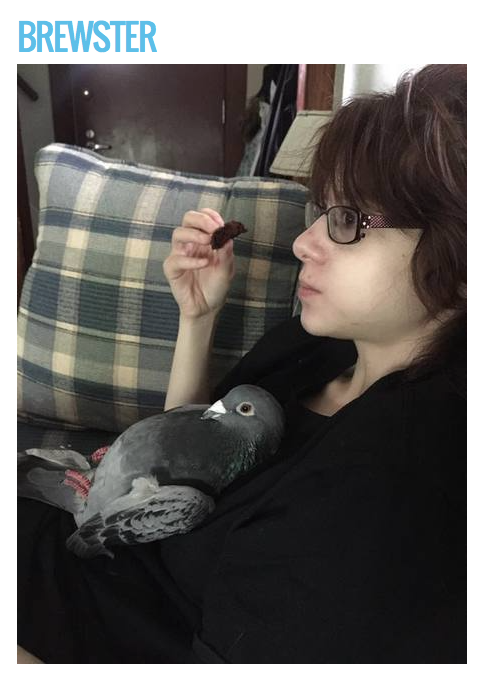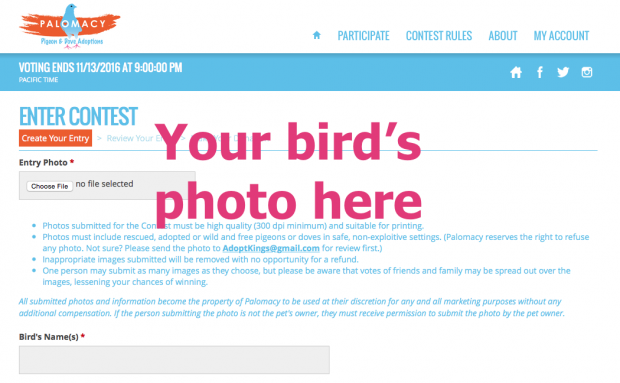Guest Post by Molly Fox and Leslie Crawford
If you ever lose your pet pigeon, don’t despair. Pigeons want to be home and you just might be able to get yours back. Our shy and kind King Pigeon Guru flew up and into the skies above San Francisco one early evening and we thought we would never see her again. As Palomacy’s Elizabeth Young said to us that night as we walked the streets of our neighborhood looking for Guru and posting flyers, “You never realize how big the world is until you lose a bird.” Looking up at all those buildings, street after street, that’s when you think you will never again see your bird. What are the odds?
But after seven days of worrying, searching and much crying, we received a text message from someone who wrote, “Hello. We found a bird that looks like yours. Please call me.” We were stunned and only cautiously hopeful, because we knew that the survival rate for King Pigeons is only hours to days. They are big, heavy, white domestic birds bred for meat and raised as poultry and they don’t have the survival skills the scrappy, wild Rock Pigeons have. They don’t know how to forage for food or water and are easy prey for predators, including racoons, hawks, gulls, ravens, cats and dogs.
It seemed like a miracle that Guru was returned to us, and it was. But miracles happen with the help of a lot of well-meaning people and great organizations. Our miracle happened, too, thanks to Elizabeth’s calm and wise counsel. Here’s what we learned to do to have a chance of finding and saving our bird:
1. Guard against loss Of course, you never want your bird to be lost. Protect her! Take great care with doors and windows to keep your pet bird safe. Know that clipped wings will not prevent a startled bird from flying (even a heavy King Pigeon can still fly with clipped wings) and pigeon pants are more diaper than safety harness (though much better than being outside without any protection). Our Guru startled and flew right out of her pants. When outside, always keep your pet bird safe in a carrier, an aviary or harnessed and held close in your arms. And make sure you have photos of your bird. This saved us, since someone recognized our bird from the flyer we posted with her photo.
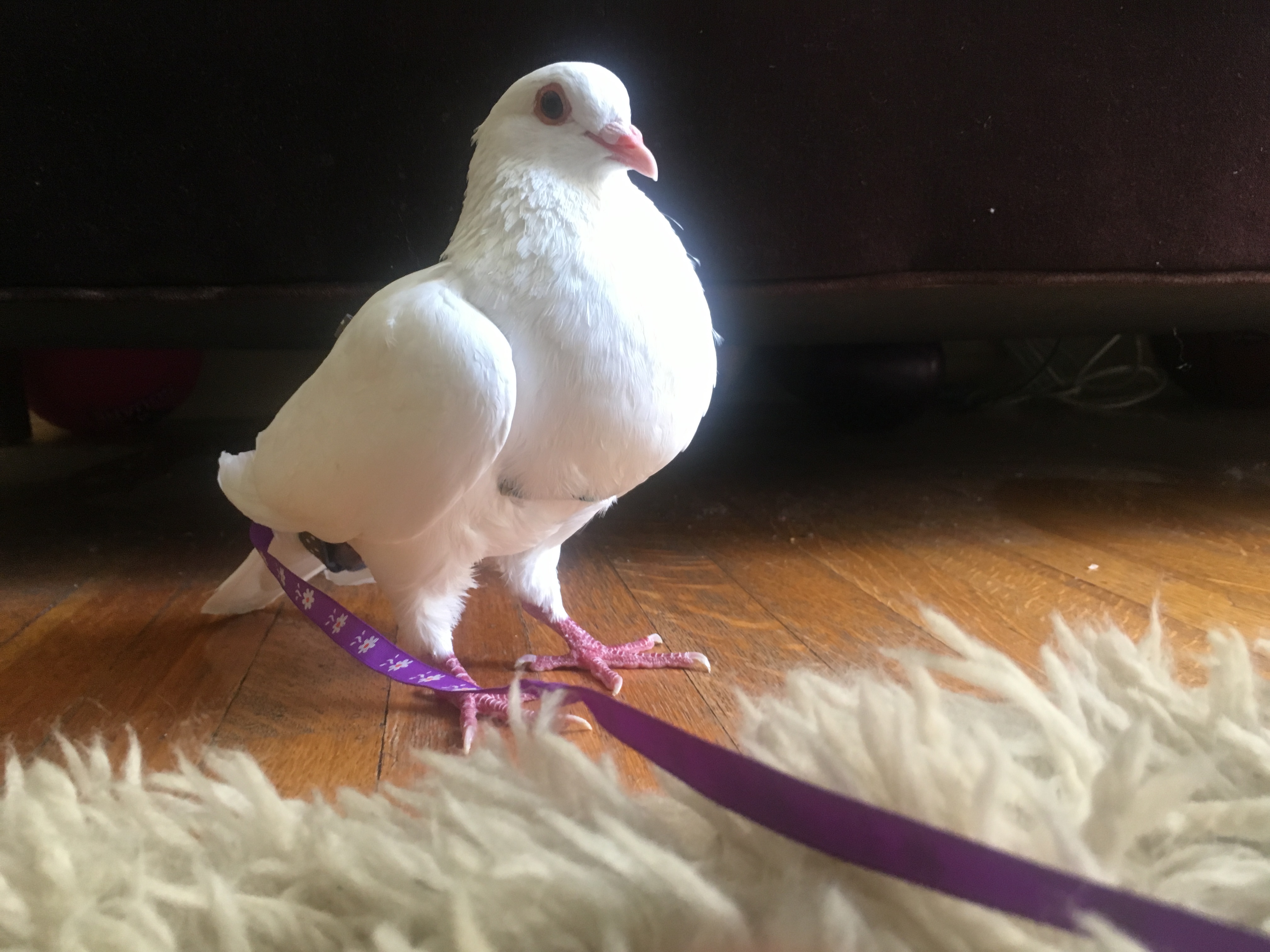
2. Keep an eye on your bird At the place where your pigeon flew away (and with any future sightings), keep your eyes locked on them to see which direction they flew and where they land. They often change course (ours did), but getting a sense of their direction can help. If your bird escaped from home, keep checking the surrounding house ledges, roof tops and power wires (they rarely perch in trees) as they are likely to come back and want to get in to their home. (They’ll be spooked and nervous, though, so don’t chase them. Lure them into an open aviary or home with food or their mate safely caged). If you see your bird at night, the pigeon will be tired and, with poor night vision, likely stay put till dawn. If your pigeon can be reached, catching them where they are roosting at night is a possibility. If it’s during the day, use food or run the hose (they will be thirsty and recognize the sight and sound of water) to get the bird to come to you. If your bird has a mate, bring him or her with you. If you find your bird, this will help ensure your bird doesn’t fly away since they have a strong connection with each other. If your bird doesn’t have a mate, but you have other birds, bring the closest member of the flock, whichever one it gets along with best. Remember: Time is of the essence. The sooner you do the following steps to try to find your bird, the better a chance you have to get your bird back safely.
3. Get (and keep) the word out on social media Post messages (include photo of lost bird, location last seen including city and state, date lost and your contact info) on as many social media sites you can, such as your Facebook page, Twitter, as well as other websites such as craigslist (the first place many finders of lost birds post), Nextdoor (a fantastic resource for anyone looking for a lost pet) and even an international bird-finding site we discovered called Parrot Alert.com. Keep re-posting so that your lost bird post is seen by as many people as possible. The more people who are looking out for your lost pigeon, the more likely she is to get home.
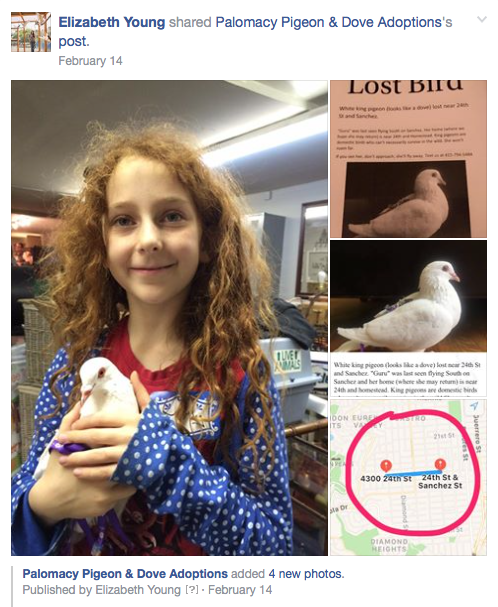
4. Contact Palomacy They can advise you about your specific situation. A pigeon who gets lost by flying out from her home or aviary is more likely to return home than one lost elsewhere and will need a different kind of assistance. Some pigeons (Homers, Racers, Rock Pigeons) have excellent homing abilities and are good flyers and have better odds of getting back home safely. King Pigeons, Fantails, and many of the fancy breeds have poor homing and flying skills and will need extra help to get home. Palomacy will also post on their Facebook pages and help alert the pigeon rescue community, which will notify lots of bird lovers to be on the lookout and to share on their pages
5. Post & distribute flyers Put flyers up around your neighborhood (this is where photos that you lovingly took of your bird come in handy), including at your local pet stores and vets, which is where the animal-loving folks will really spread the word. Given that we found our bird about two miles from where she flew away, if possible, flyer beyond your immediate neighborhood.
6. Contact your local pet adoption organizations & rescues We live in San Francisco, so we alerted WildCare (they rescue lots of pigeons) and Animal Care & Control (SFACC). SFACC is an amazing open-door shelter that takes in several rescued pigeons every week, including two King pigeons found stray the week Guru was missing. (By comparing photos of their faces, we could tell by their eye rings that they were not ours.)
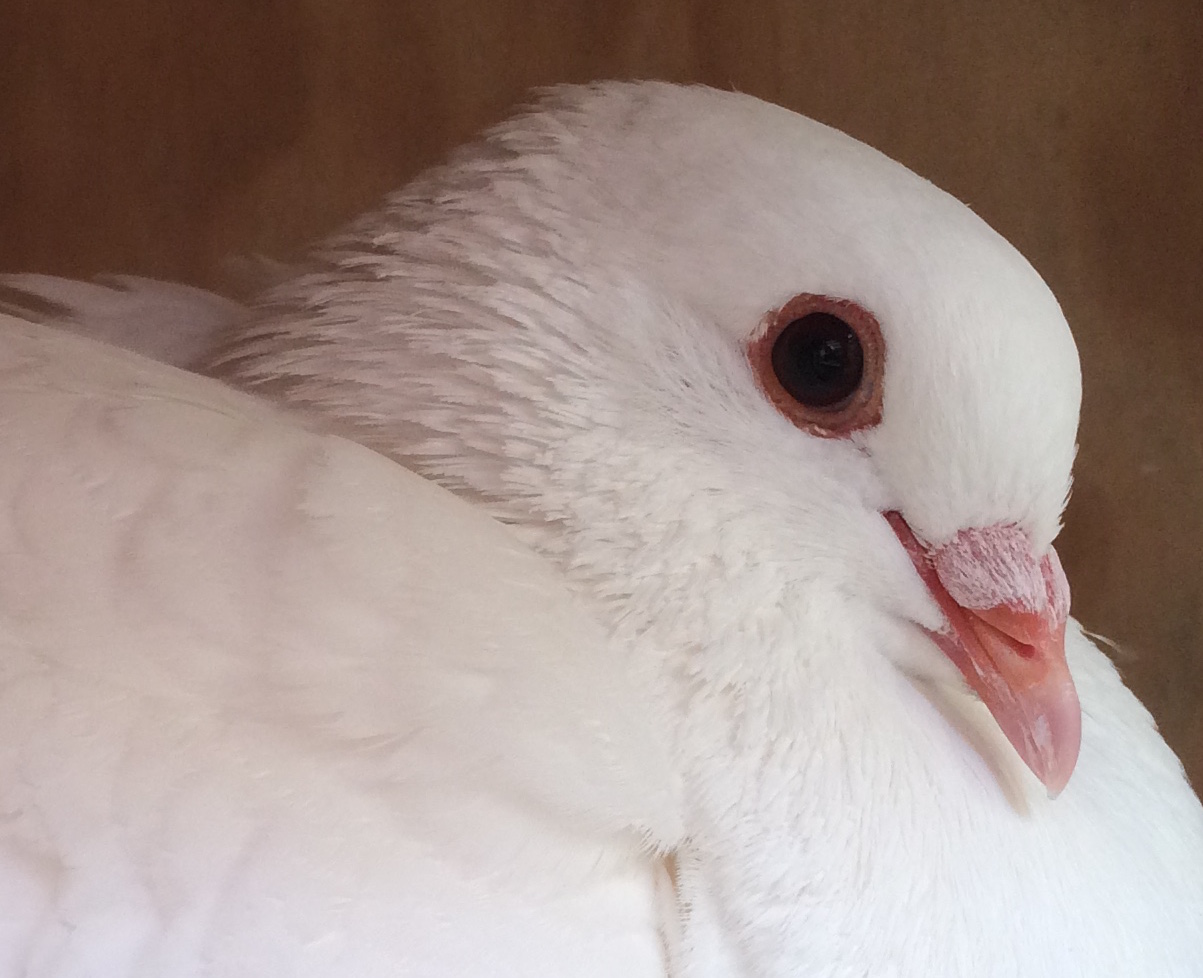
Guru- lost 2/13/17
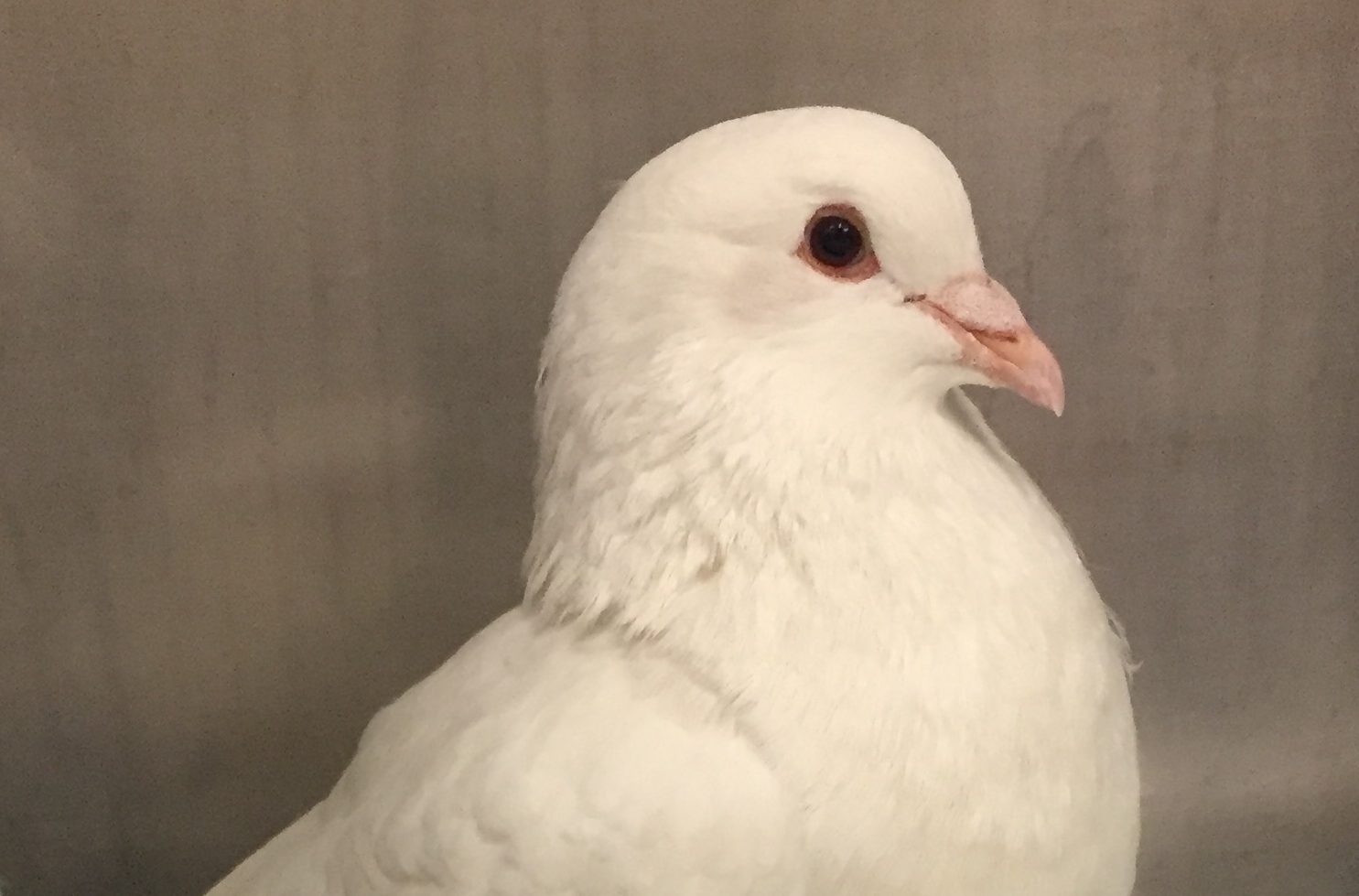
Boots- rescued 2/14/17
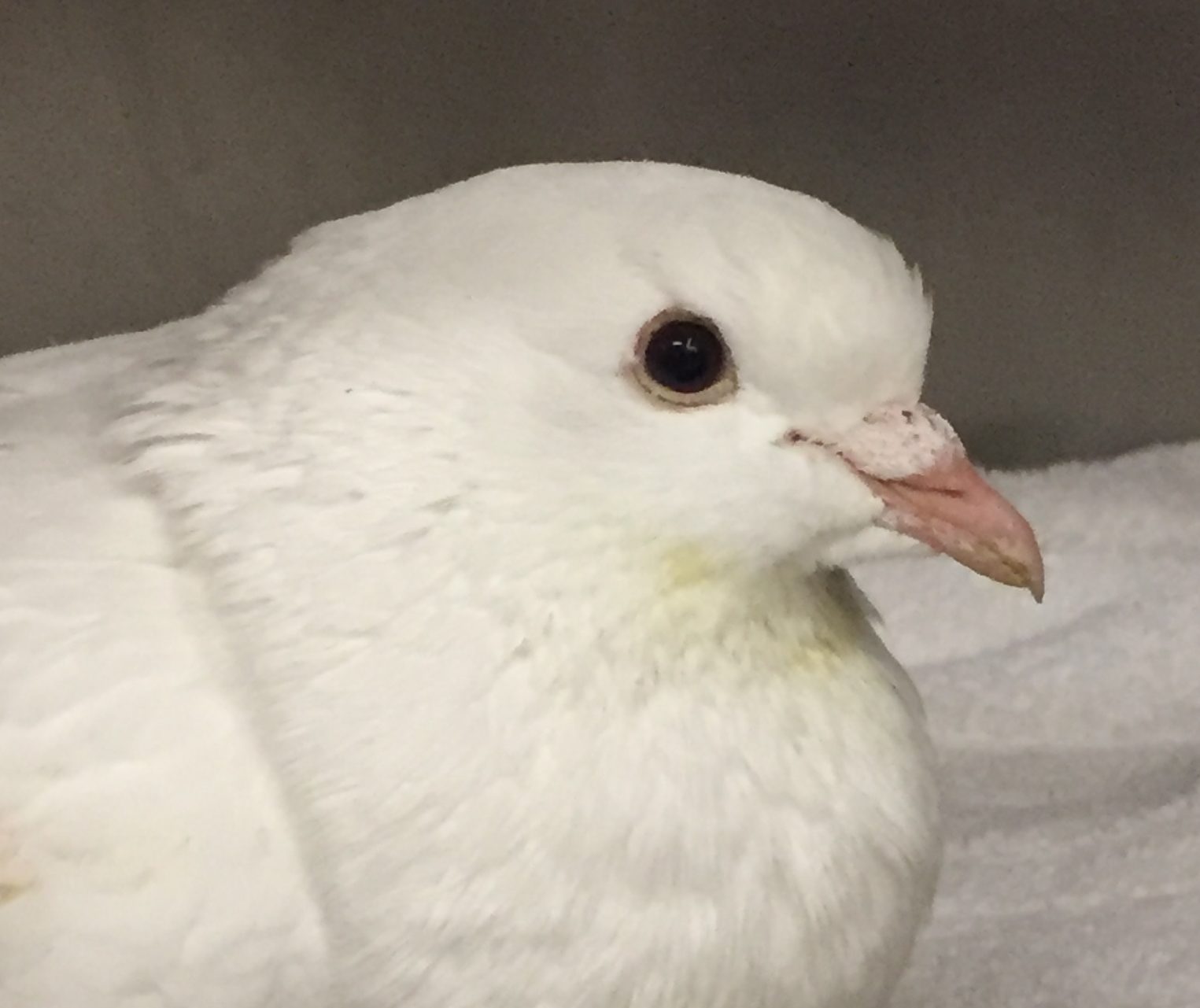
Fennel- rescued 2/16/17
Our bird Guru had been taken to SFACC when she was first rescued as a baby and that is where she was when Palomacy took her in on 6/19/14. They also are the reason we found her! We had posted a flyer there and someone had seen it. He later happened to be walking by the couple who had found our weak pigeon and told them he recognized our bird. They went back home, looked on the SFACC website, and contacted us. We answered immediately and drove in our PJ’s to their place to recover our bird, with plenty of happy tears.

2/20/17 REUNITED! GURU IS SAFE!
7. Walk the neighborhood every day We kept returning to the spot where Guru had flown away. On the way, we would talk to a lot of people (and educated them about rescue pigeons and Palomacy) and put up flyers around the neighborhood. Several people sent us text messages saying they’d seen a bird or asking how they could help. Just having this moral support, and added faith in humanity, helped us, even if we still hadn’t found our bird.
8. Get a humane bird trap Elizabeth brought a “one-way” humane trap to our house that she set up in front of our aviary in case Guru flew home during the day. She put food inside the trap so that if Guru could find her way back home, she’d go into the trap and be held until we returned. If your aviary is outside, another possibility is to lock the other birds in predator-proof carriers inside and leave the aviary door open (during the day only, not safe at night!). As Elizabeth reminded us, pigeons want to get back home.
9. Worst-case scenario If after an extended amount of time (about a month), your bird isn’t found, talk to Palomacy or your local pet shelter about adopting a new mate for the widowed bird (unless you had a single).
10. Best-case scenario: Your bird is reunited with their people and bird family! Check them over as stray birds are often injured and feathers can hide a lot. Give them a lot of nutritional food and water. Never let their bowls go empty. Make sure they have a clean bowl for bathing. They are so happy to be back in a safe sanctuary and are ready for a pigeon spa. Our bird was so dirty and it took lots of baths until she was back to her pristine self.
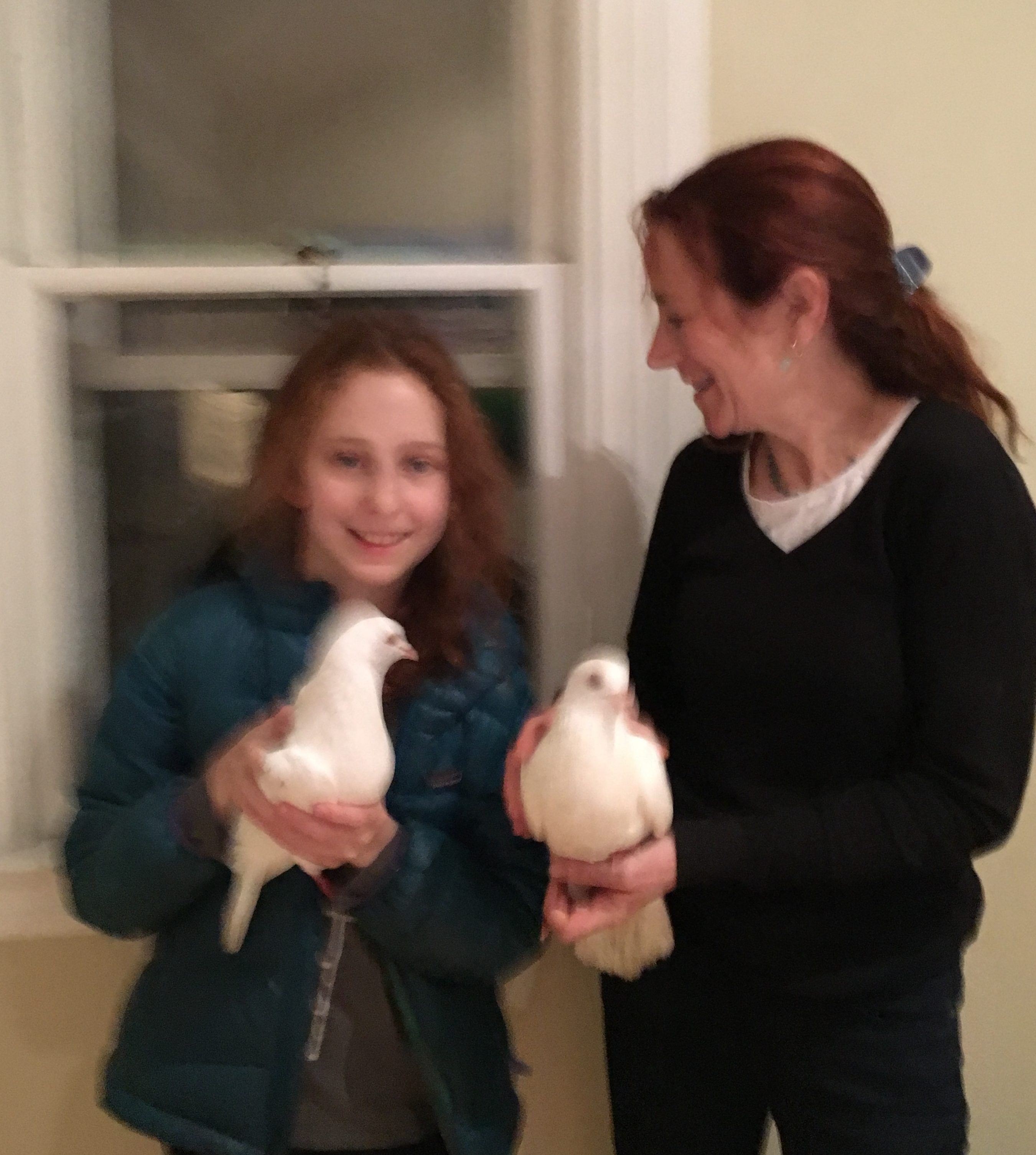
Molly & Leslie with Pax & Guru- found!
Finally, we aren’t including this in the list, but we made an offering to the universe that if we got Guru back, we’d donate $100 to Palomacy and not eat chocolate for a week. We were thrilled to have made the donation and every time we were tempted, but didn’t eat chocolate, it reminded us of how lucky we were to get Guru back. But we also realized that getting Guru back wasn’t pure luck. It was thanks to a lot of people and great organizations that act as a safety net for lost animals. Palomacy, our local animal shelter, and caring people who rescued our bird worked together to get her safely back to her nest.
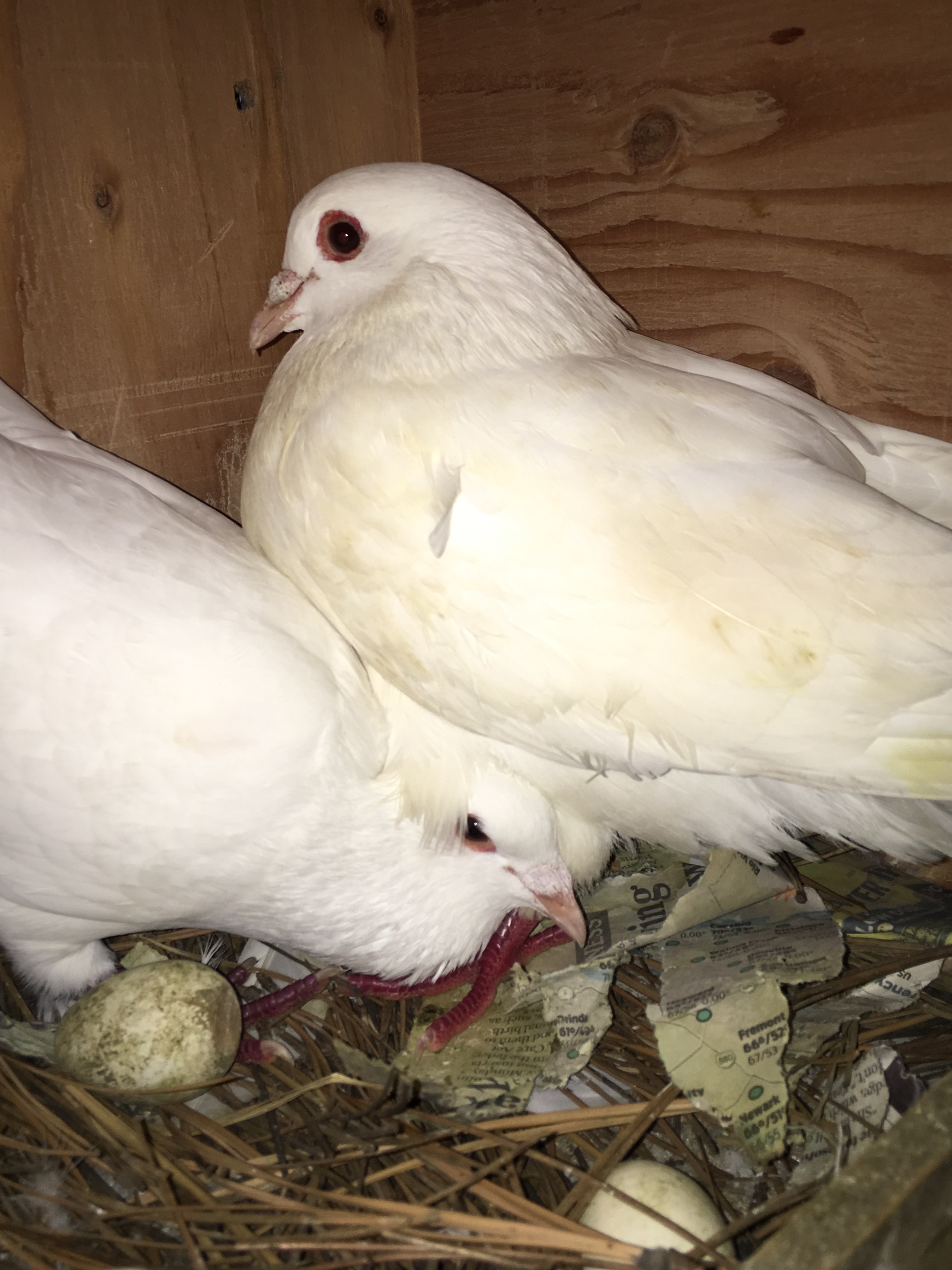
Pax & Guru so happy to be reunited
So, if there were a number 11 on our list, the tip is to keep trying and keep hoping. After a week, we had almost lost all hope, but still kept looking. Then, we were reunited. Guru was exhausted, thin and very hungry, but uninjured. She was so lucky! She had actually gone two miles in the wrong direction. Her mate, Pax, who had missed her so much, was so mad at her when she returned (“Where were you!?”), he pecked at her and made angry cooing noises. But within a half hour, all was forgiven and she was sitting on his head. True love.
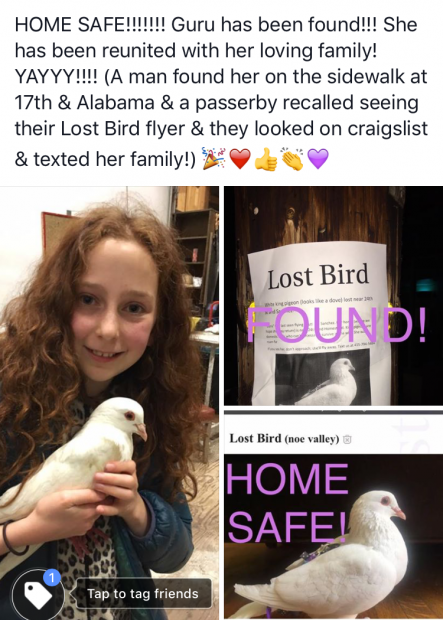
 Molly Fox is the proud friend and guardian of four King Pigeons: Guru, her prodigal bird; Pax; Johnson, and Ajax. She is a fierce defender of pigeons, an animal rights activist, and Palomacy diplomat. Leslie Crawford is the proud mother of Molly.
Molly Fox is the proud friend and guardian of four King Pigeons: Guru, her prodigal bird; Pax; Johnson, and Ajax. She is a fierce defender of pigeons, an animal rights activist, and Palomacy diplomat. Leslie Crawford is the proud mother of Molly.

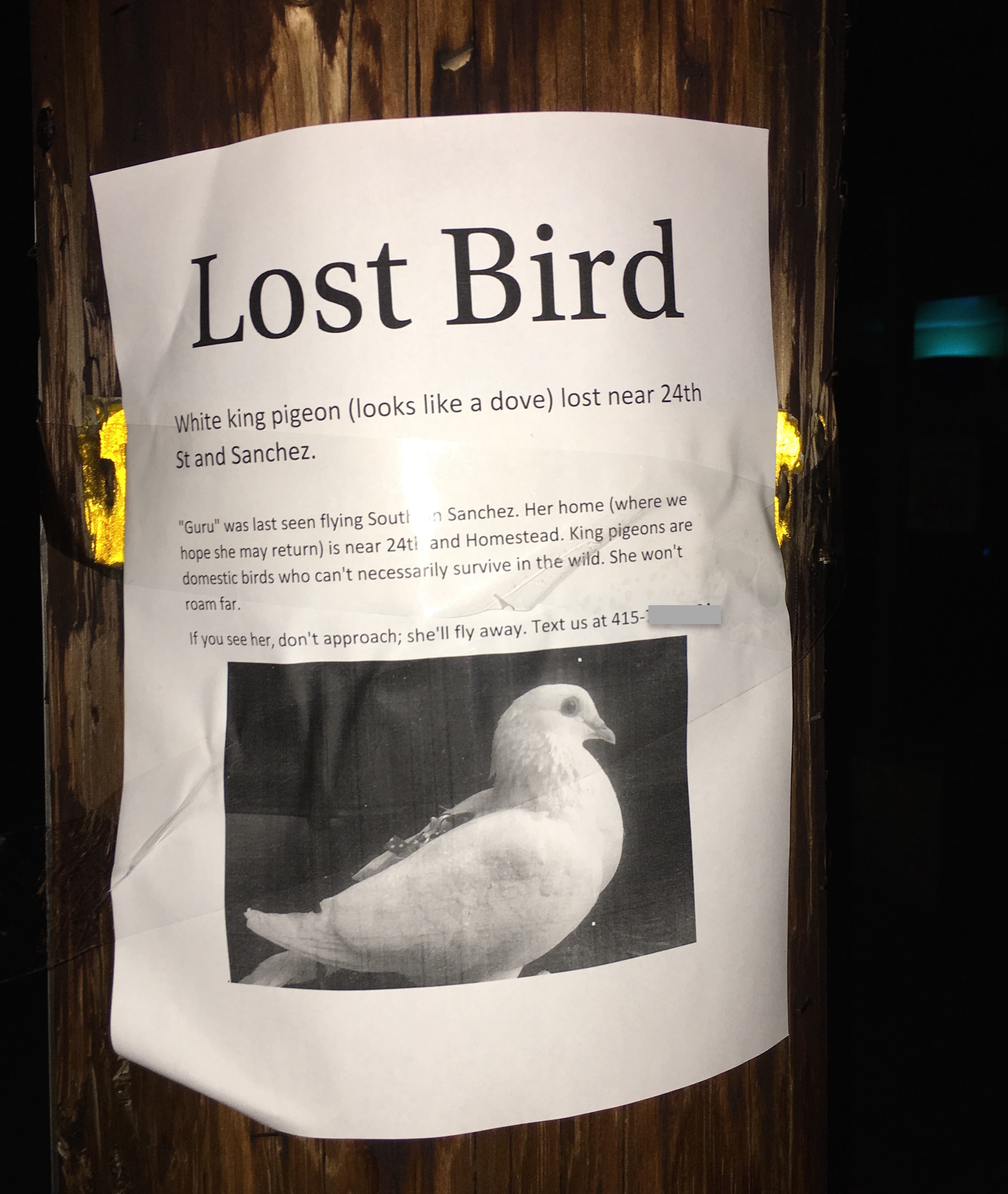

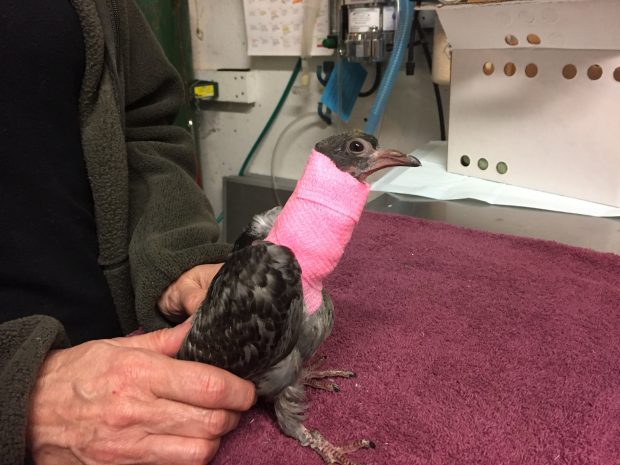
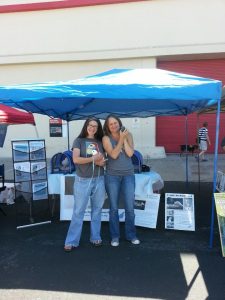


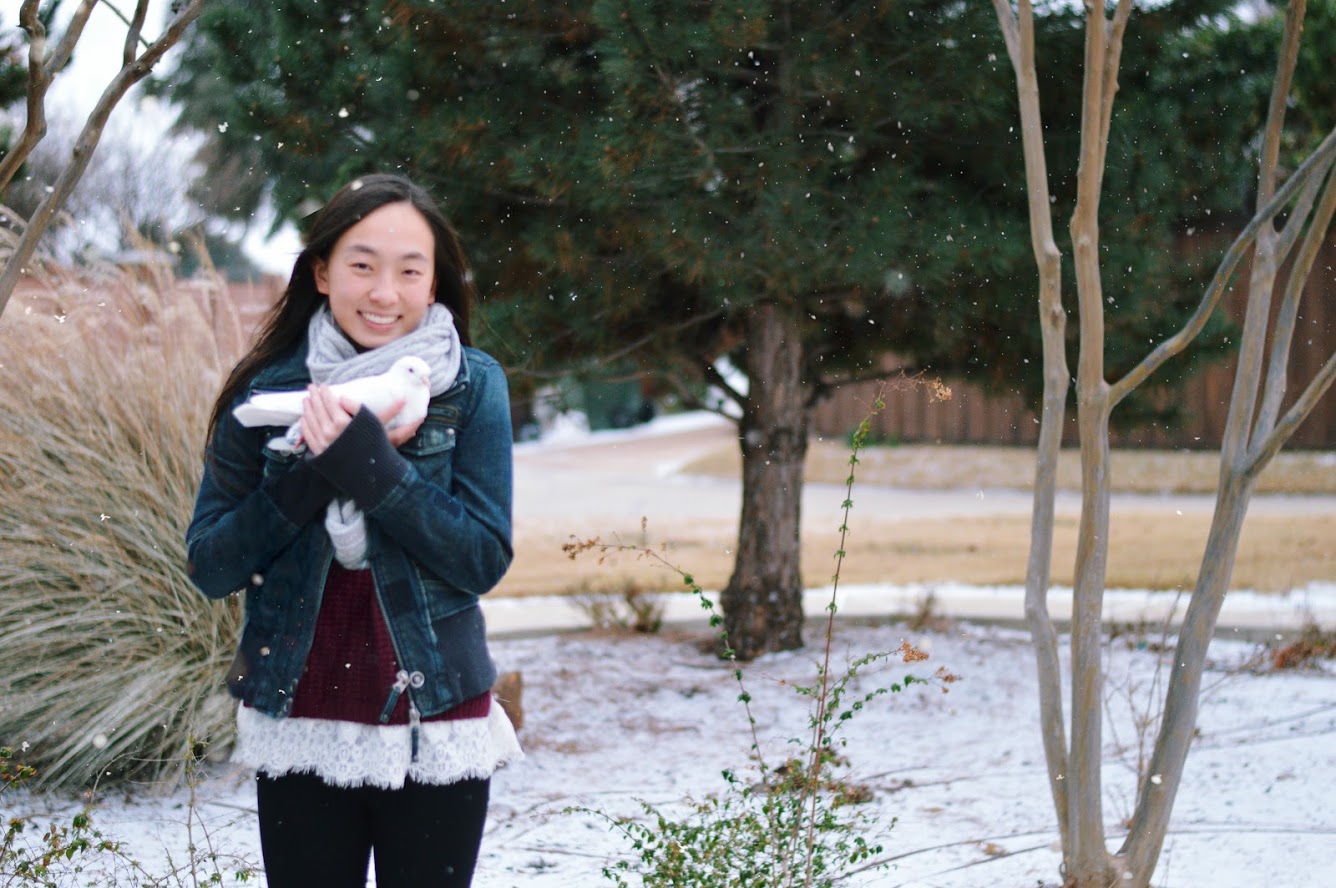
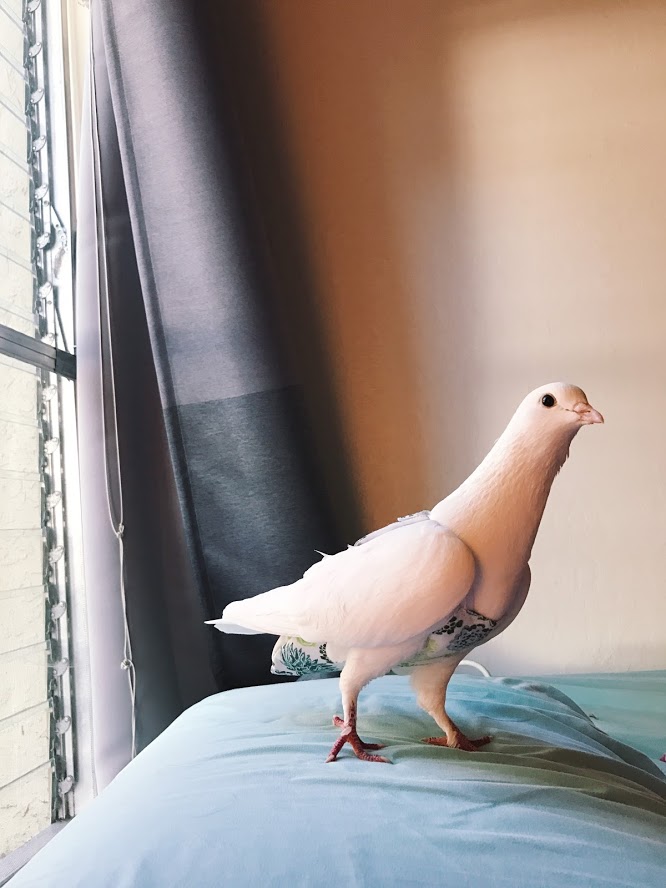
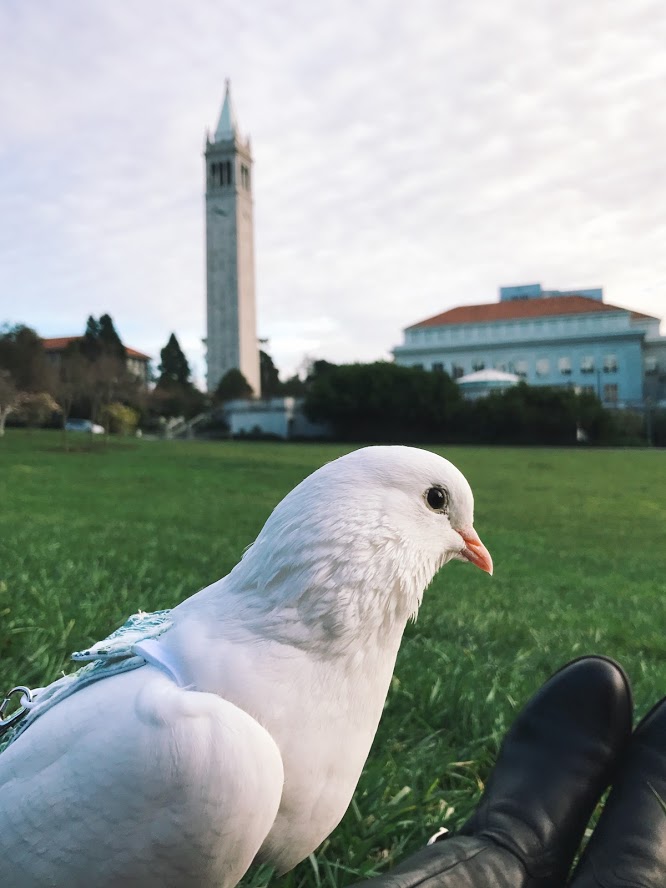
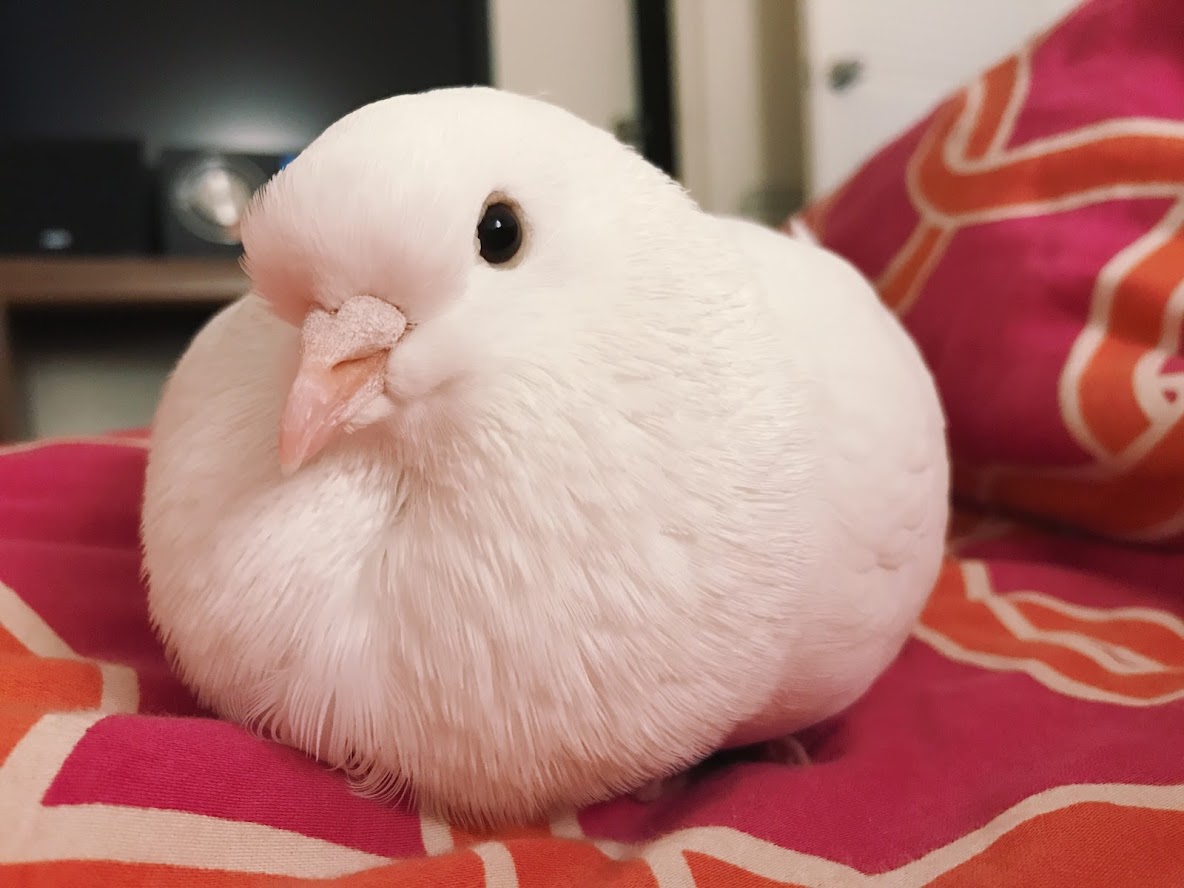
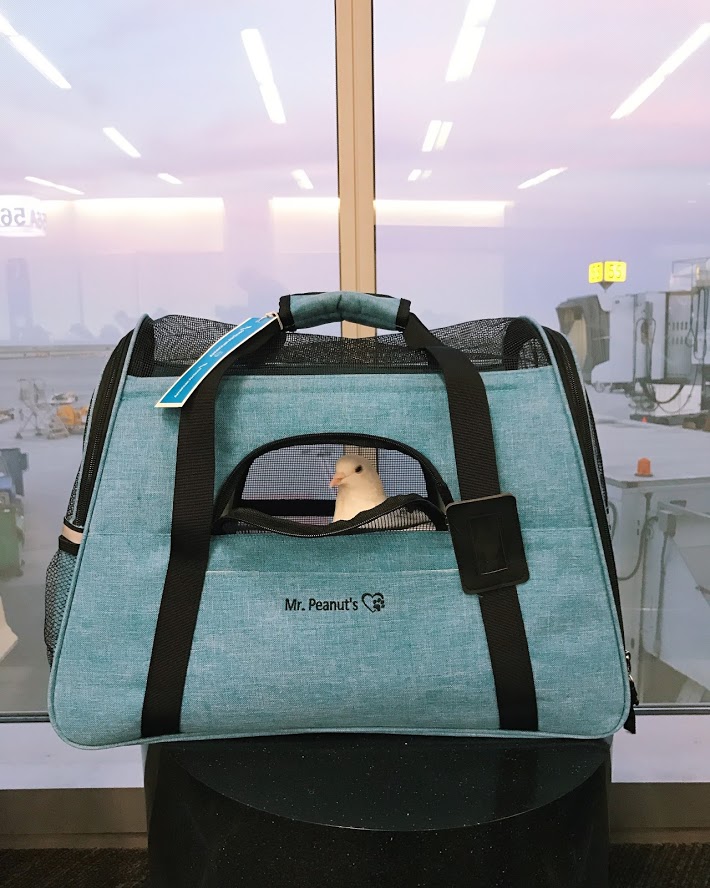
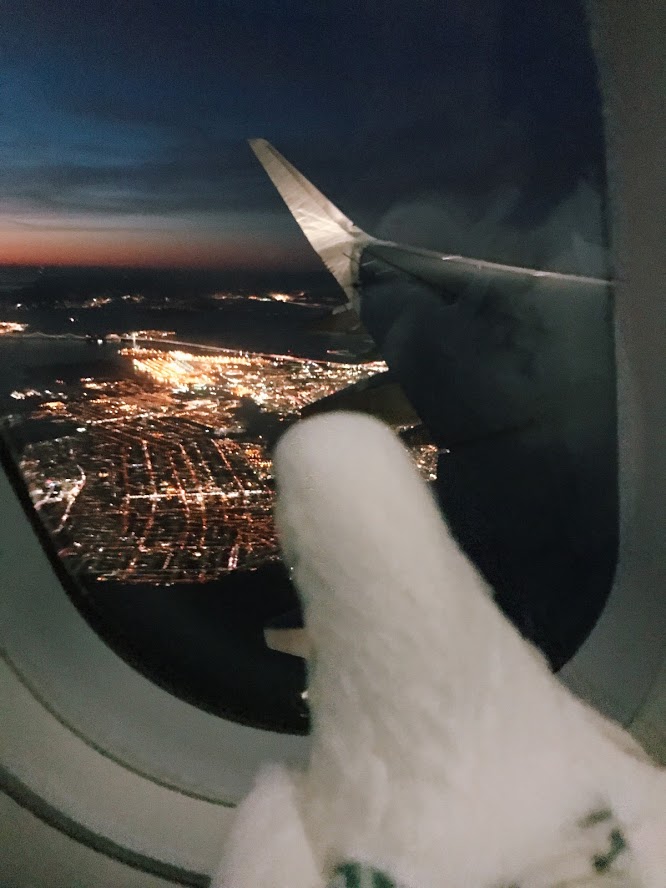
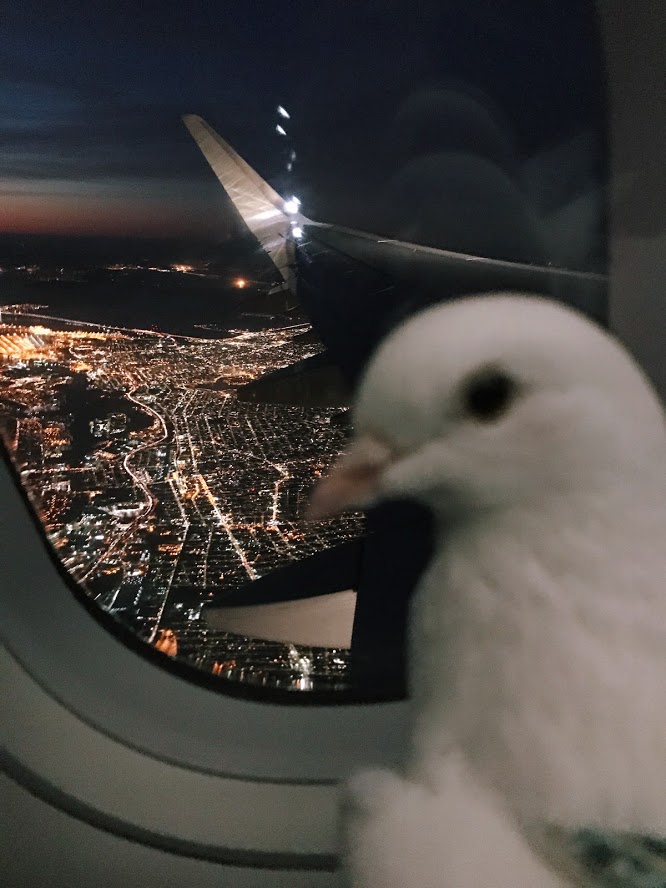
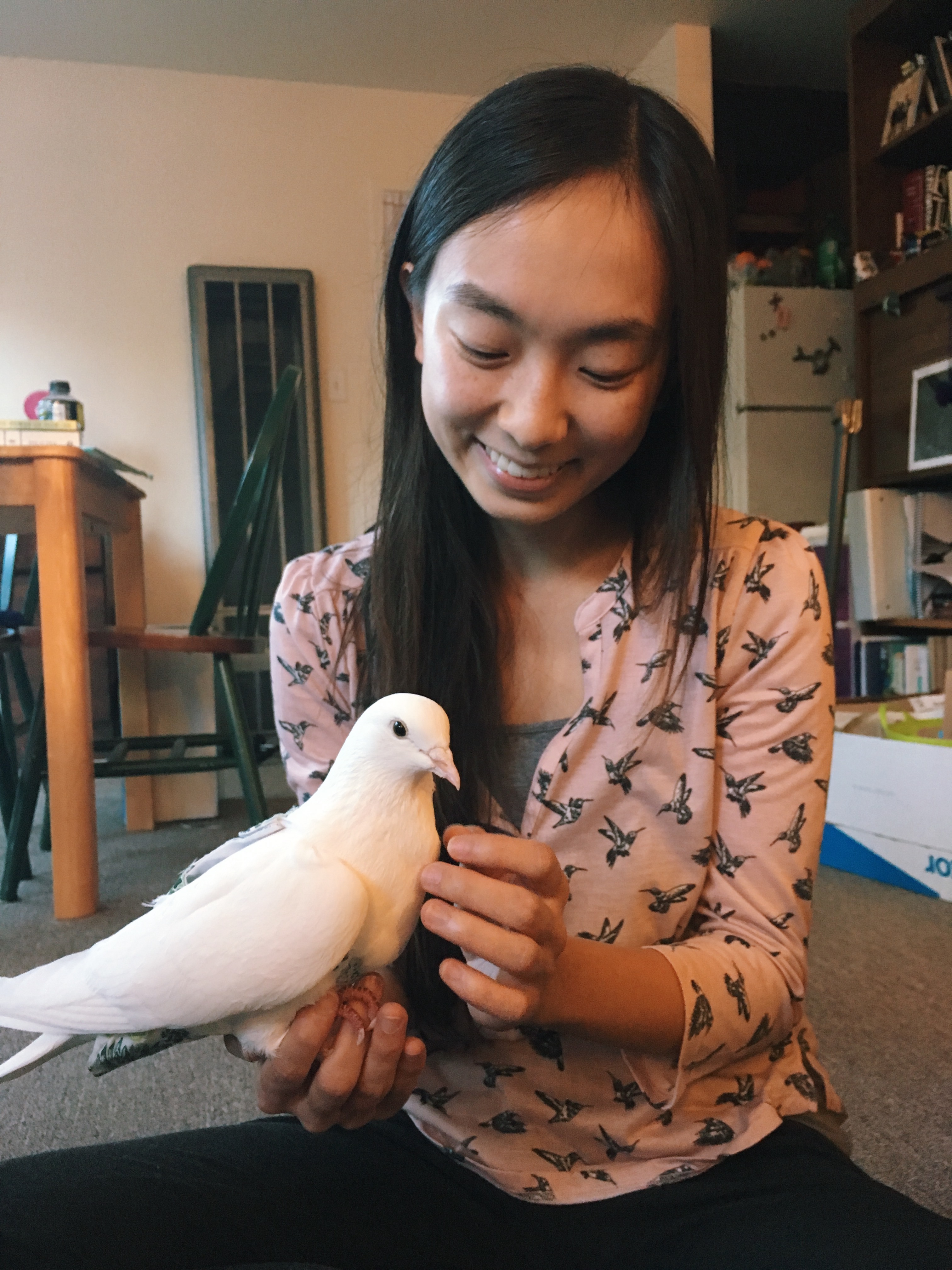 Cynthia is a 4th year student at UC Berkeley, studying Molecular Biology with a concentration in Animal Health. Her claim to fame is living with (and cleaning up after) several Tumblr-famous birds. Despite poor attendance, she managed to get good grades last semester and is still on track to graduate on time. She credits Miu with providing good company and encouragement during finals week, and hopes to dedicate her post-grad life to wildlife rehabilitation and rescue work.
Cynthia is a 4th year student at UC Berkeley, studying Molecular Biology with a concentration in Animal Health. Her claim to fame is living with (and cleaning up after) several Tumblr-famous birds. Despite poor attendance, she managed to get good grades last semester and is still on track to graduate on time. She credits Miu with providing good company and encouragement during finals week, and hopes to dedicate her post-grad life to wildlife rehabilitation and rescue work.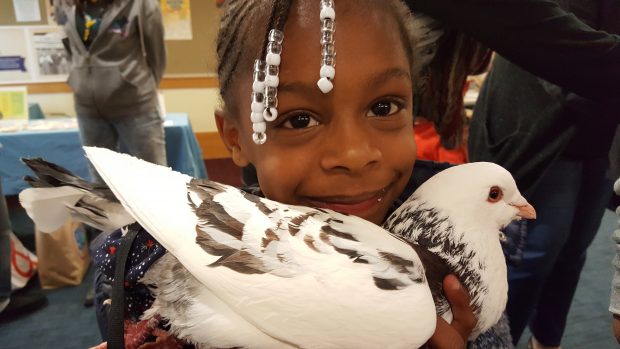
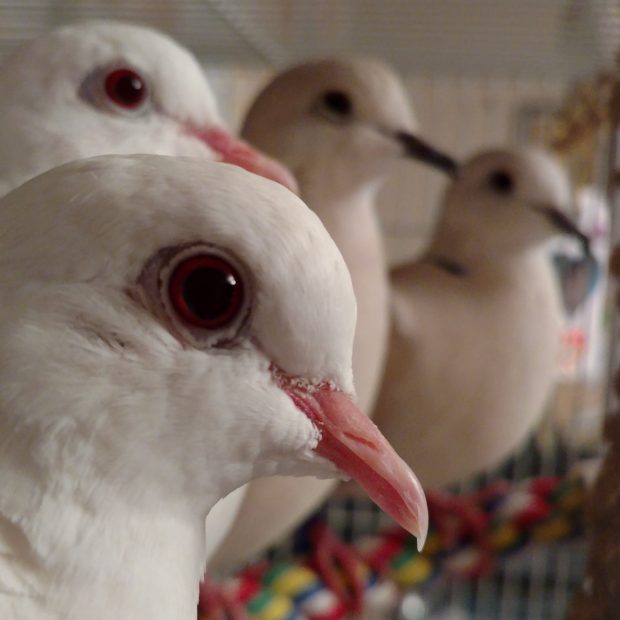

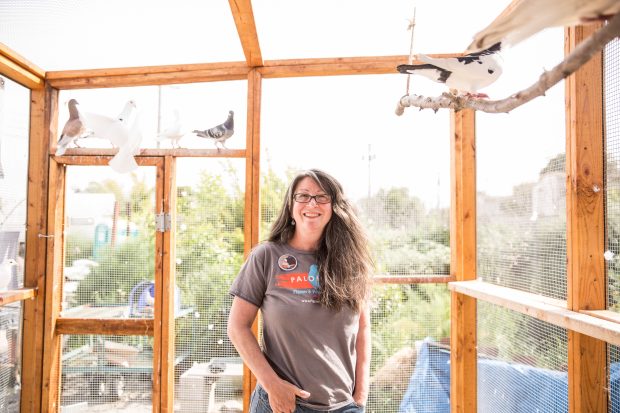
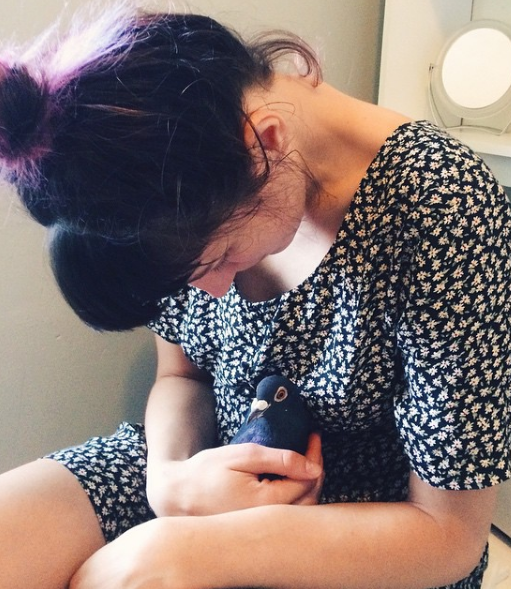
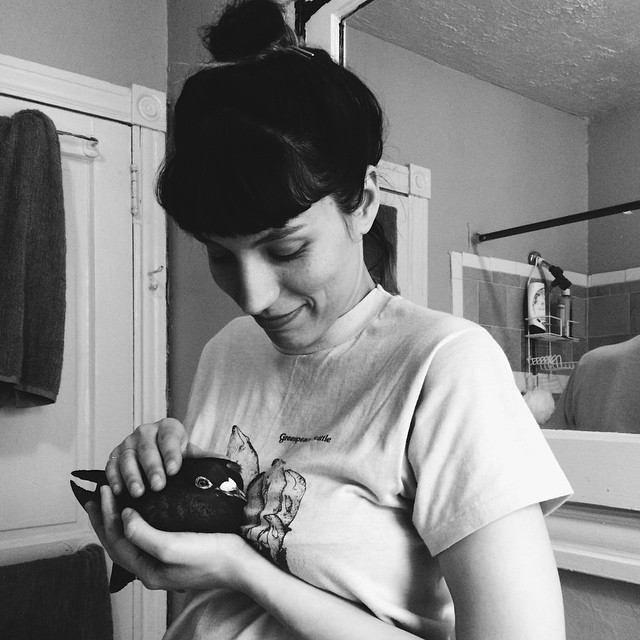
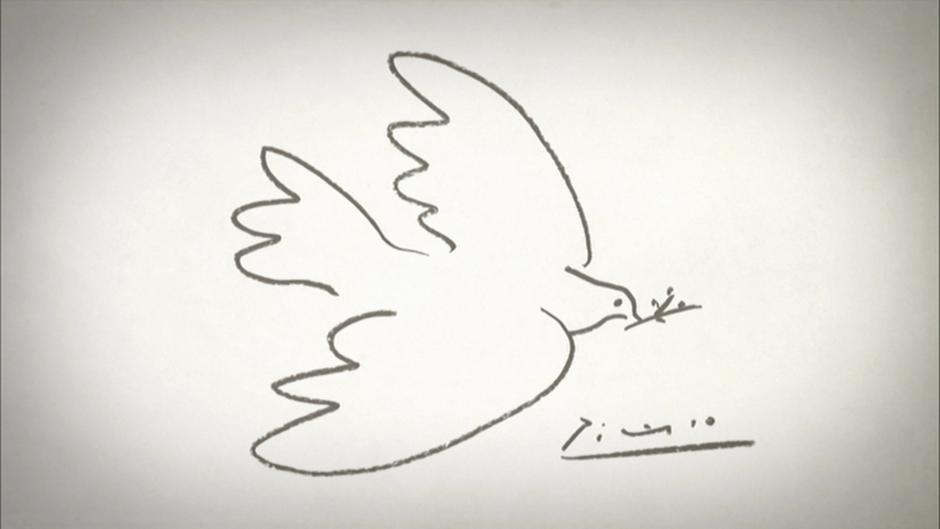
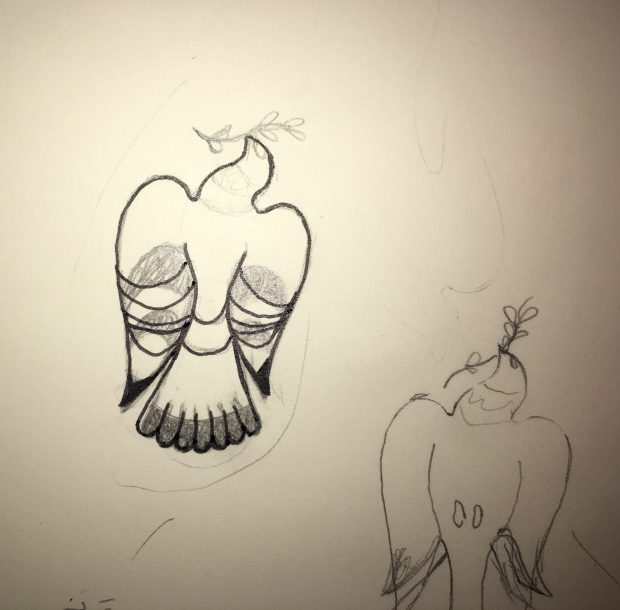
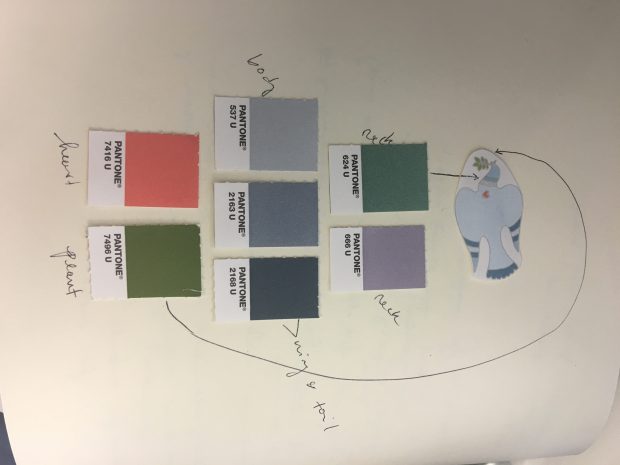
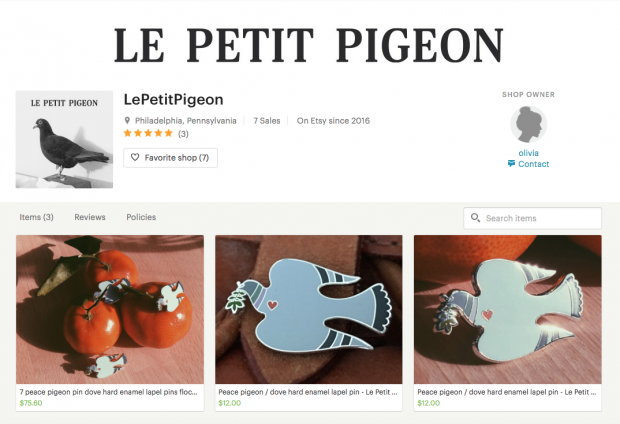
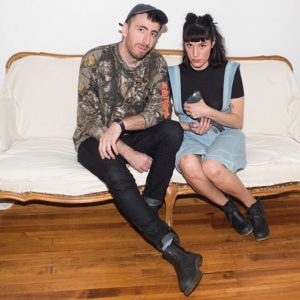 Olivia Verdugo is a graphic designer, loves urban wildlife (especially pigeons!) and lives in Philadelphia with boyfriend Joel, two pidge babies April and Charlie, and two wonderful foster pigeons Poppy and Beatrix.
Olivia Verdugo is a graphic designer, loves urban wildlife (especially pigeons!) and lives in Philadelphia with boyfriend Joel, two pidge babies April and Charlie, and two wonderful foster pigeons Poppy and Beatrix. 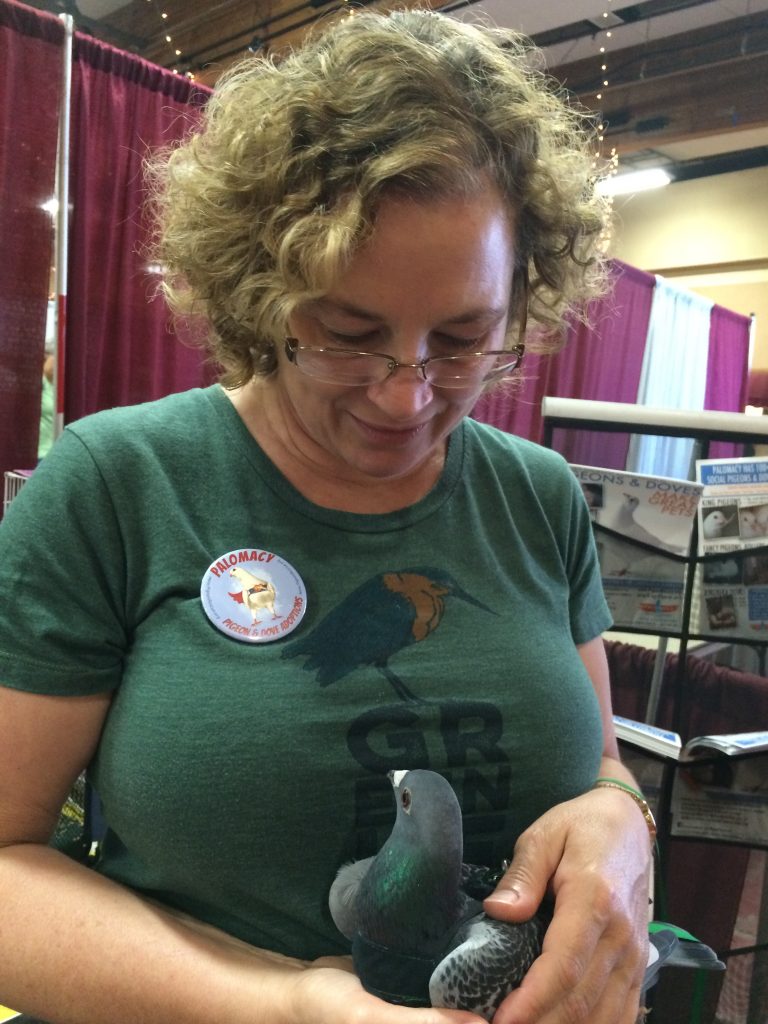

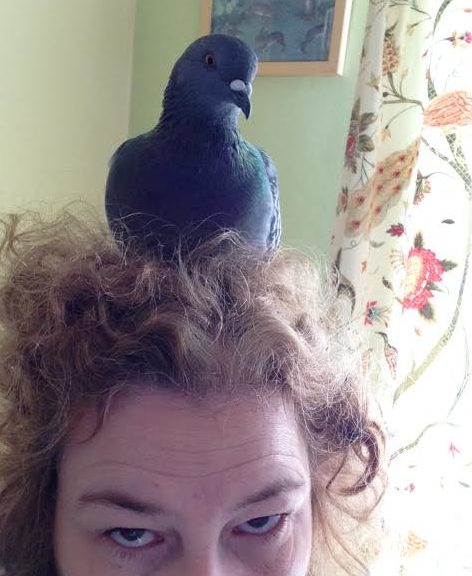
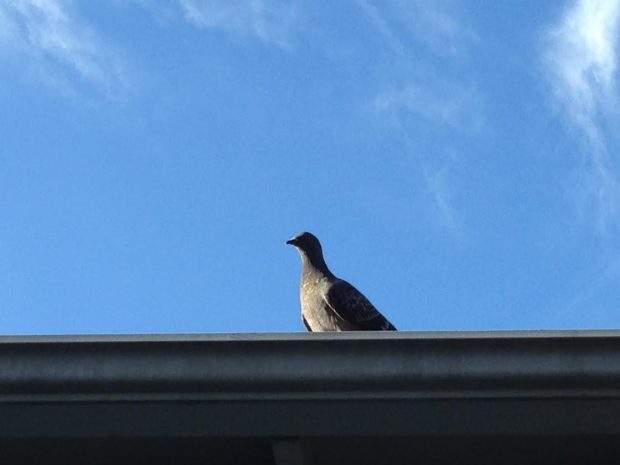


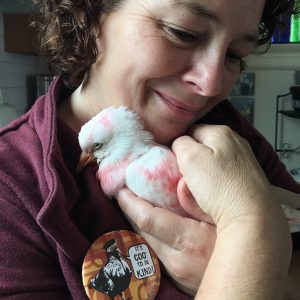
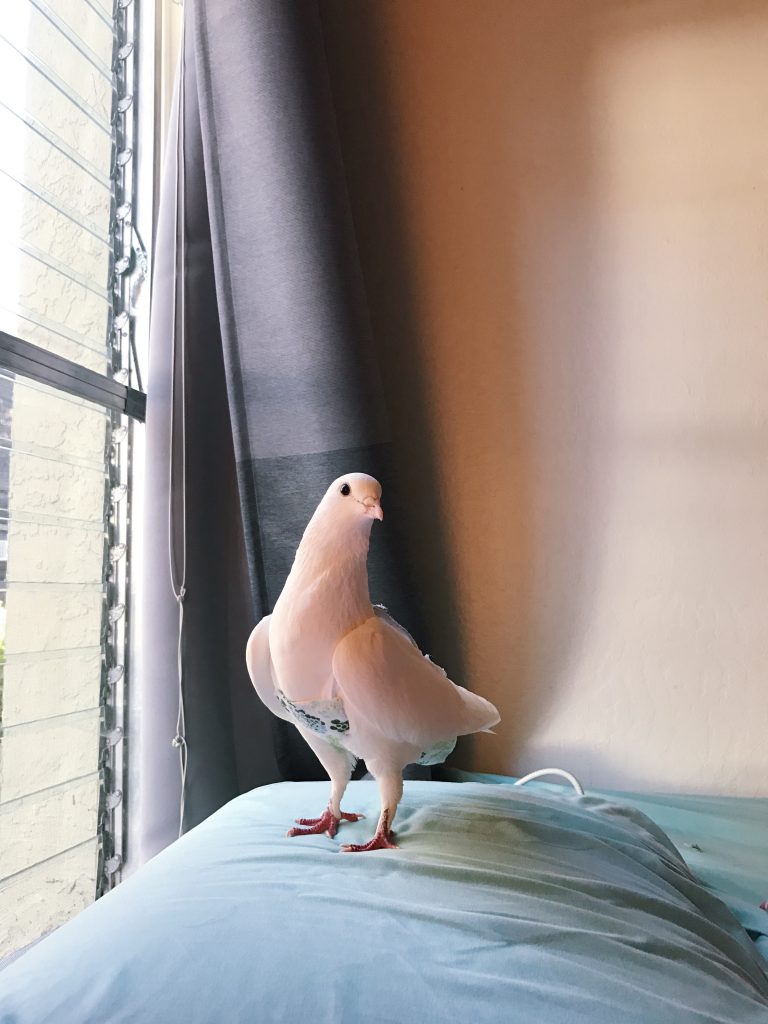
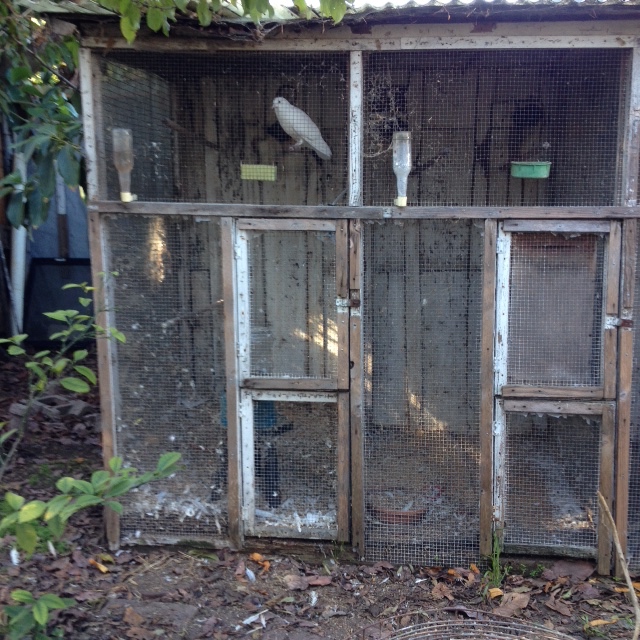
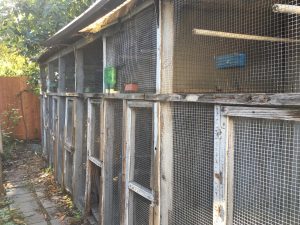
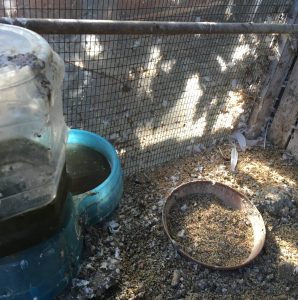
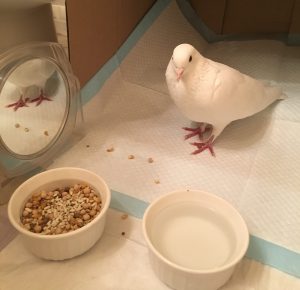
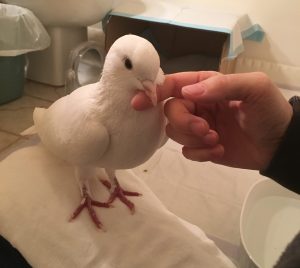
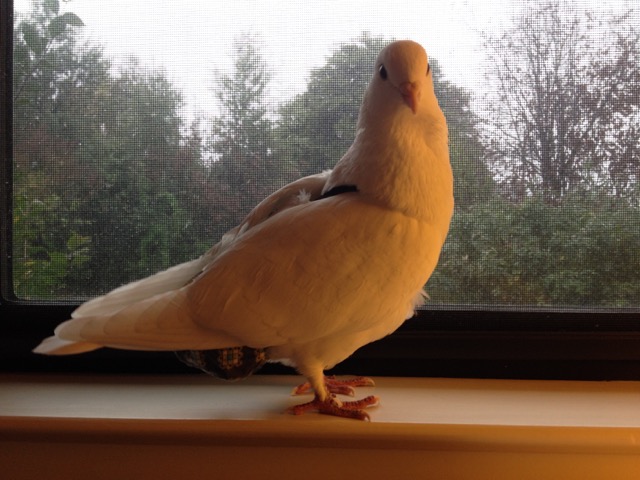
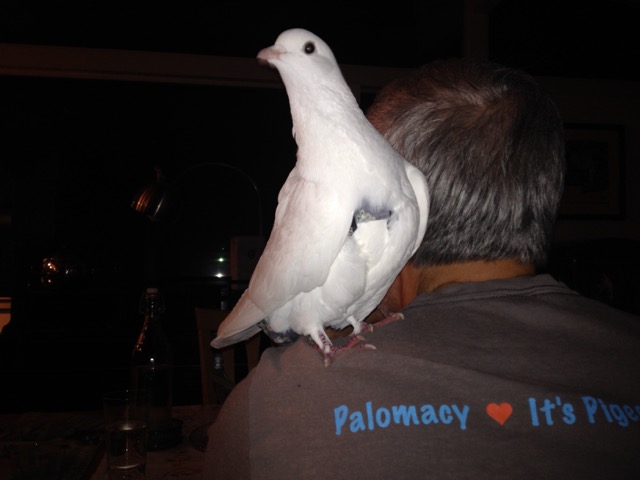
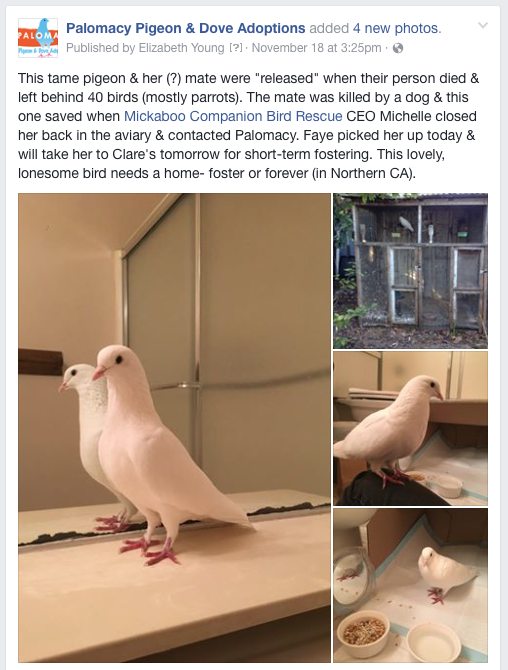
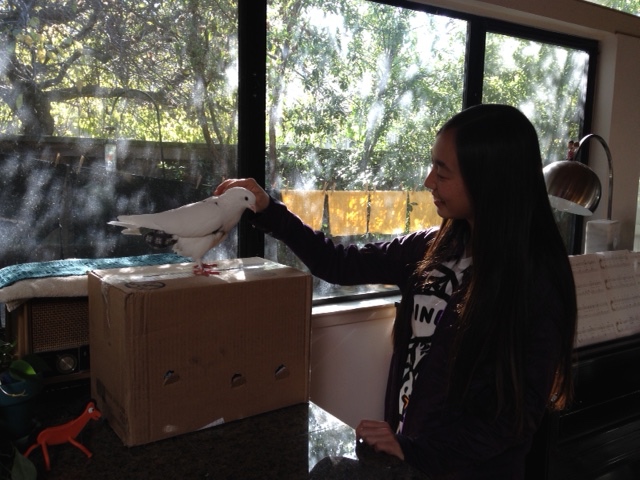
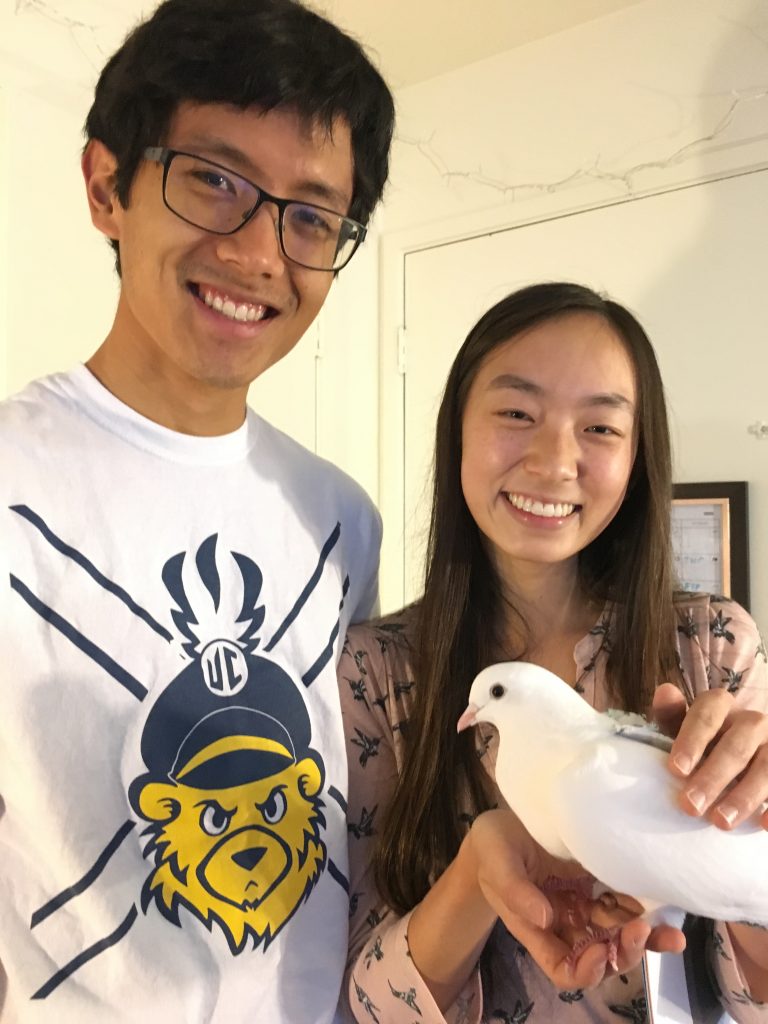
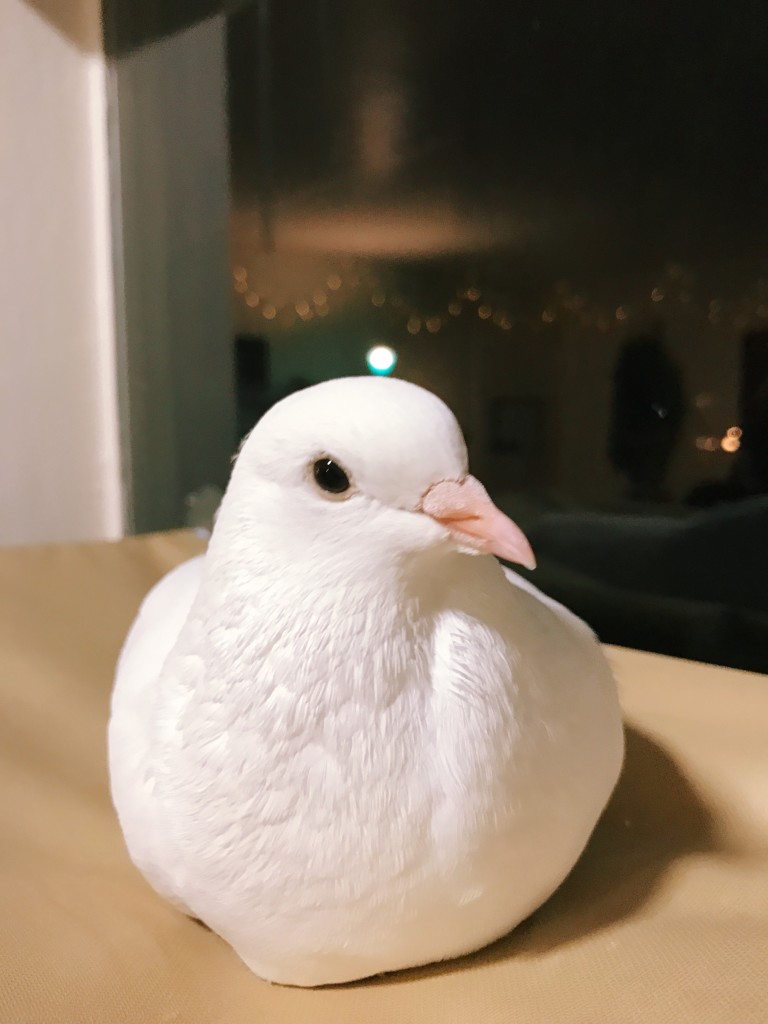
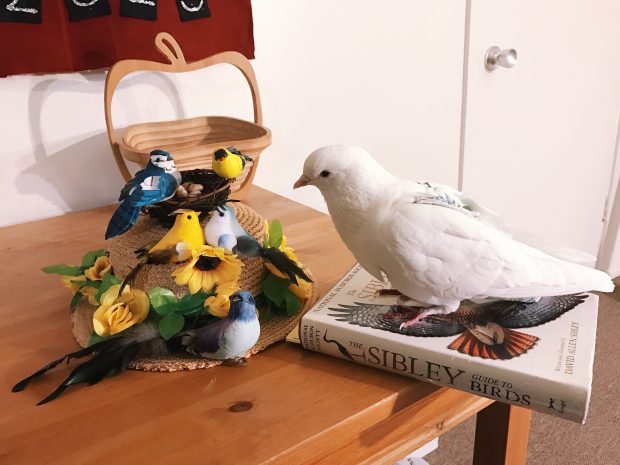
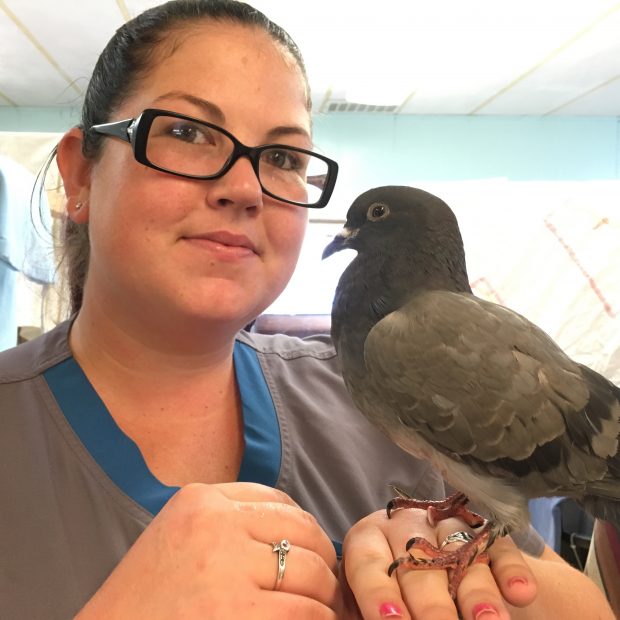
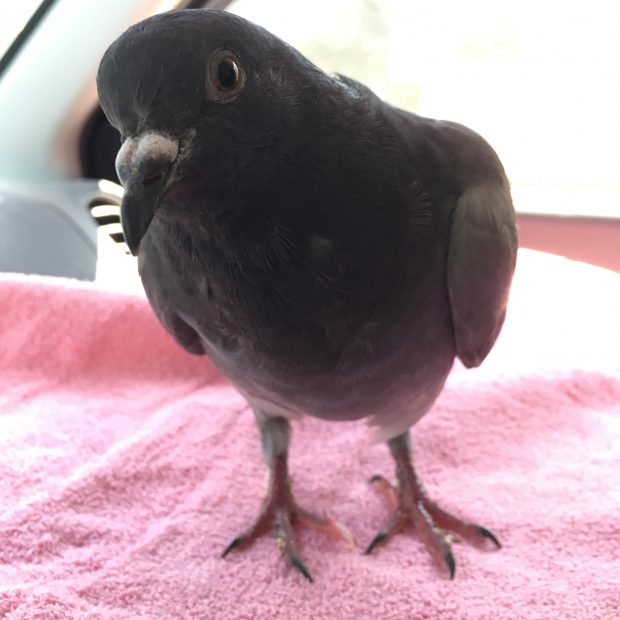
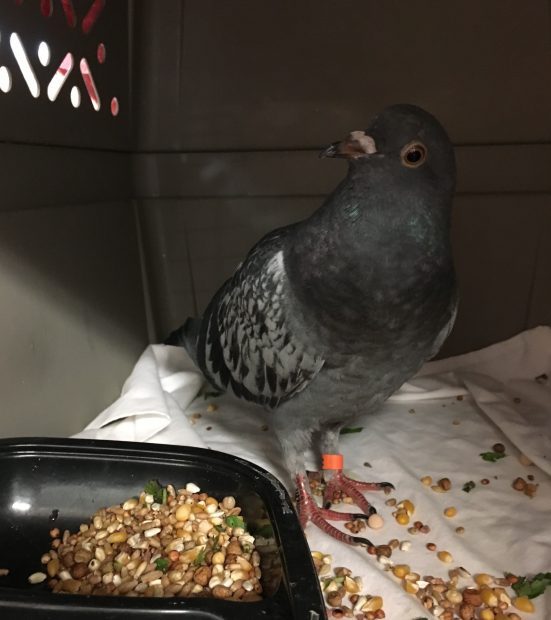
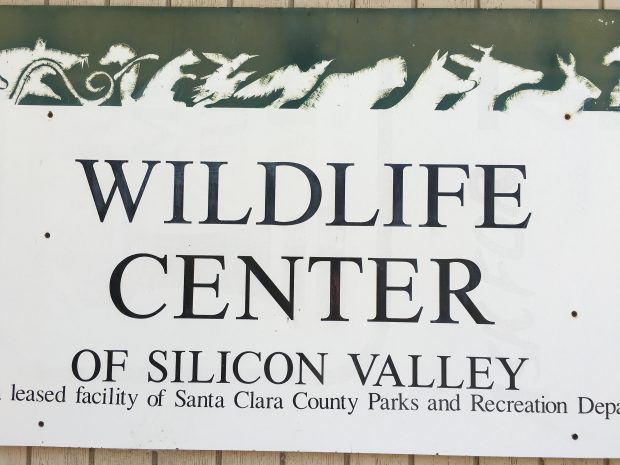
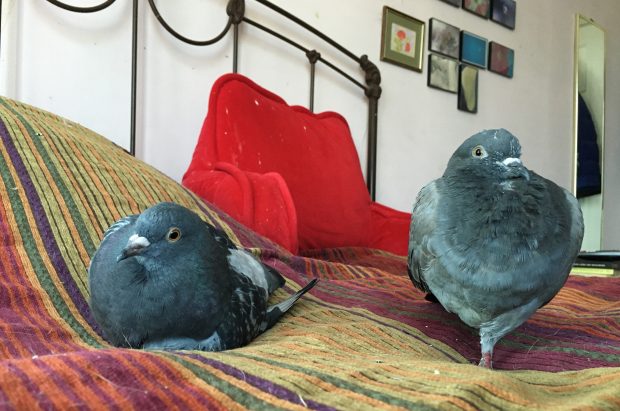
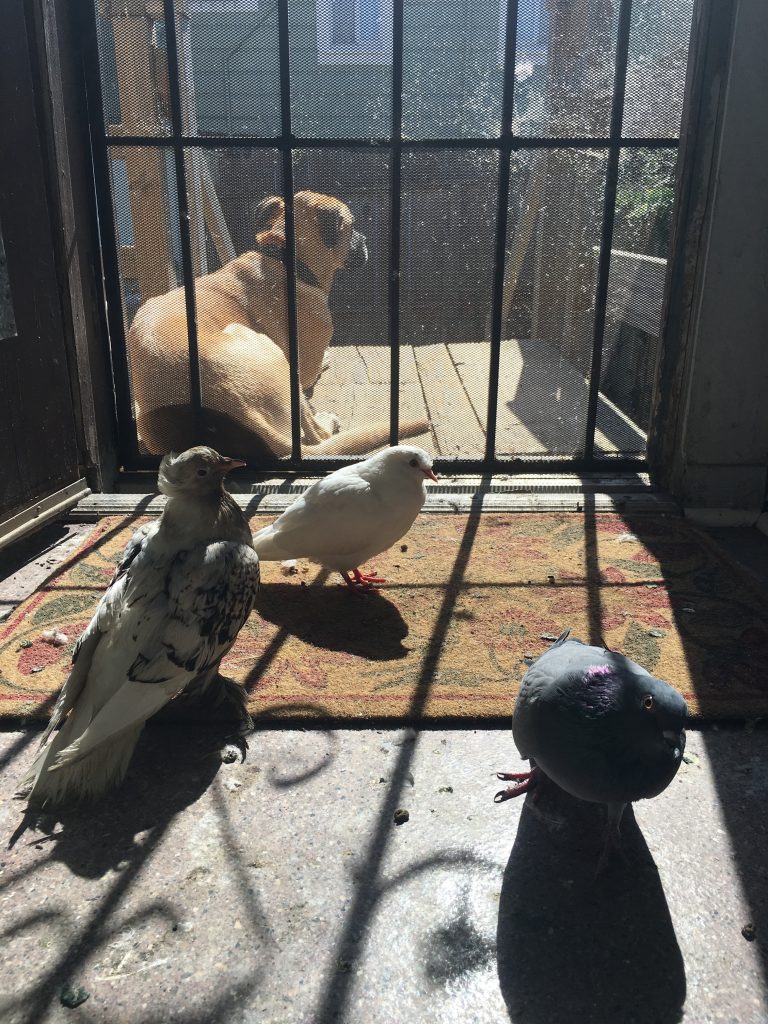
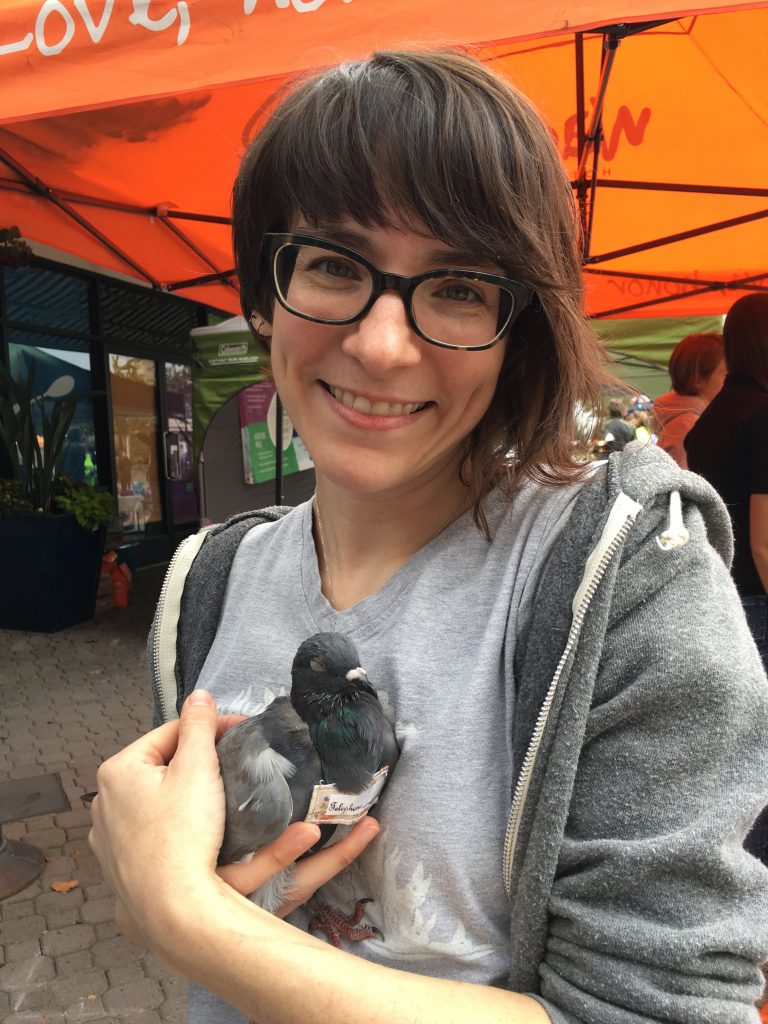
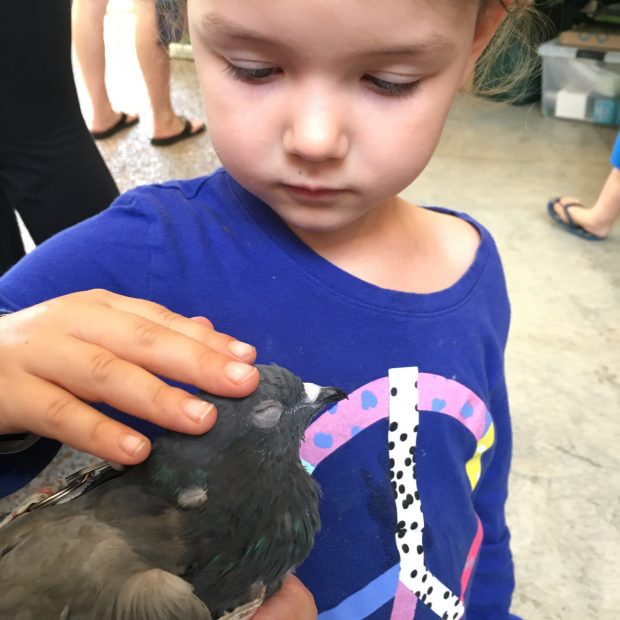
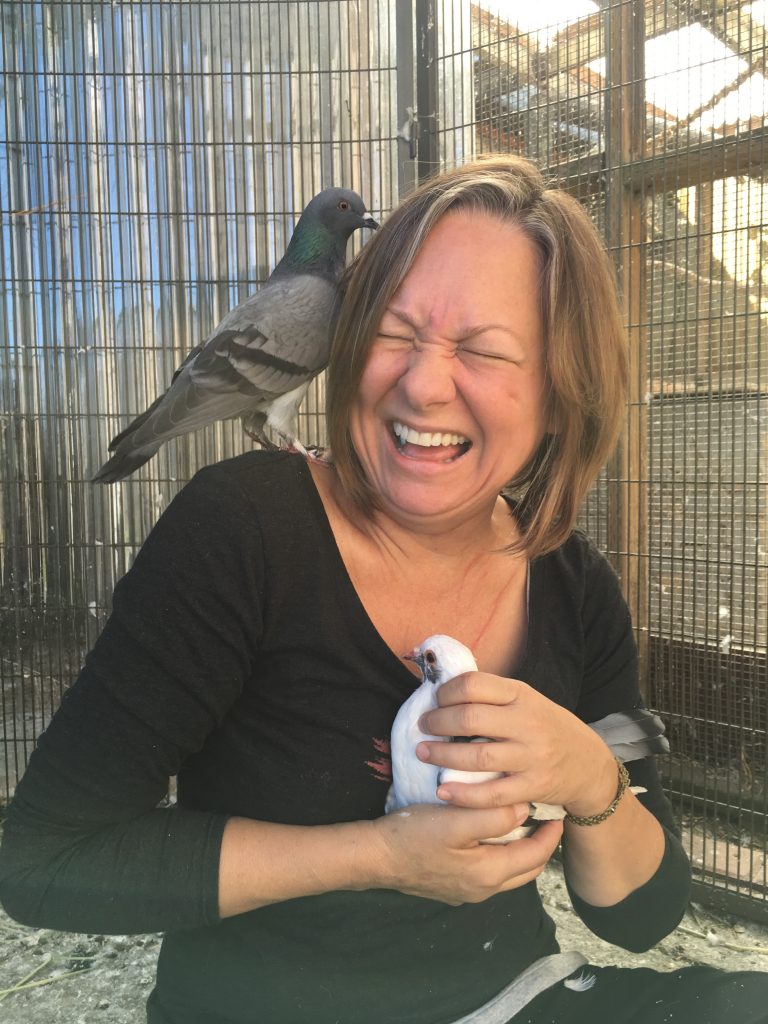
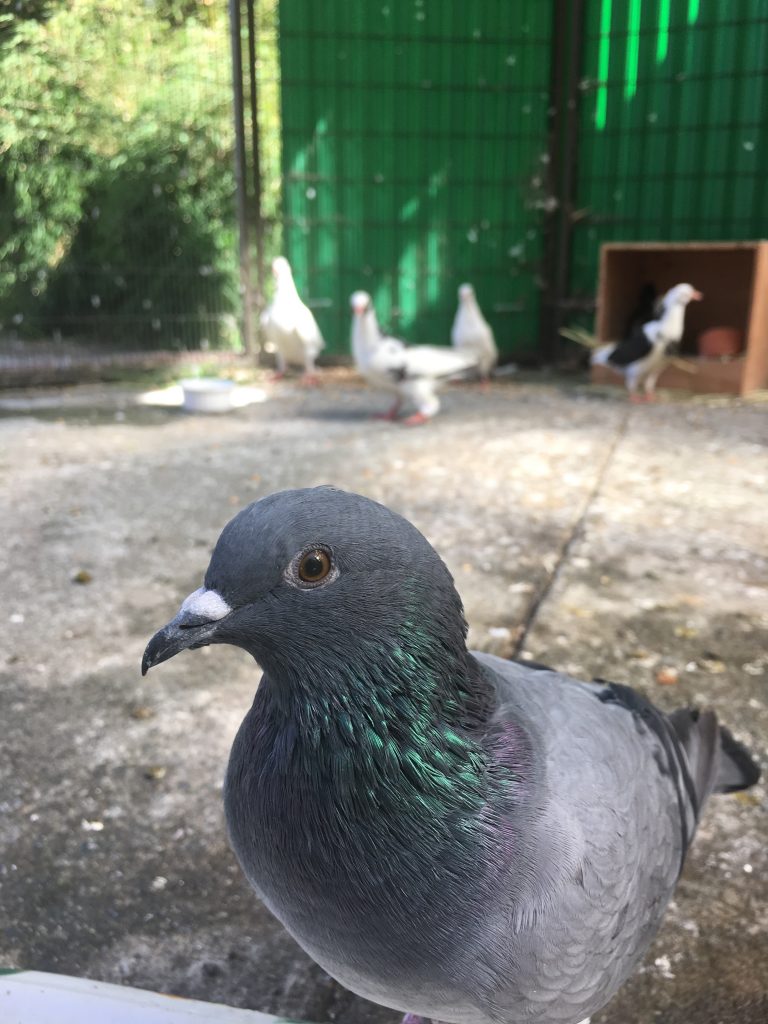
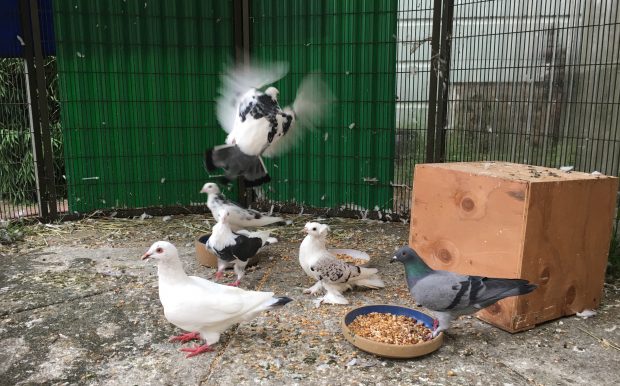
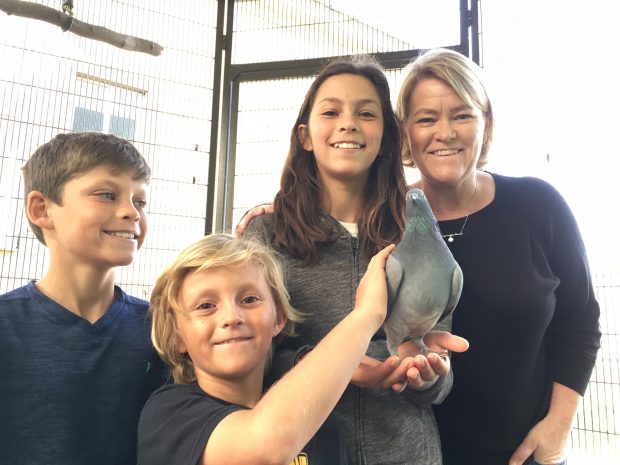
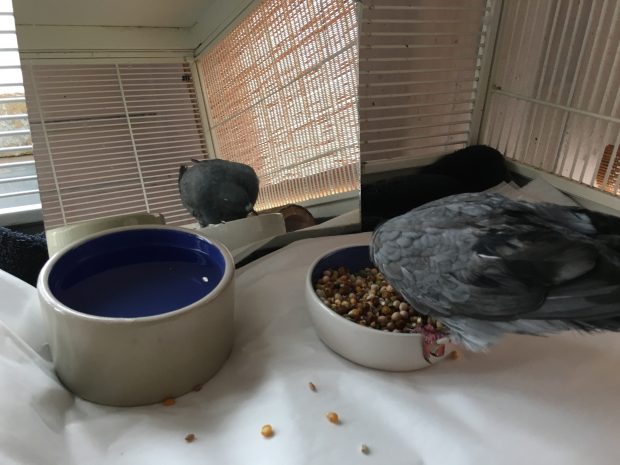
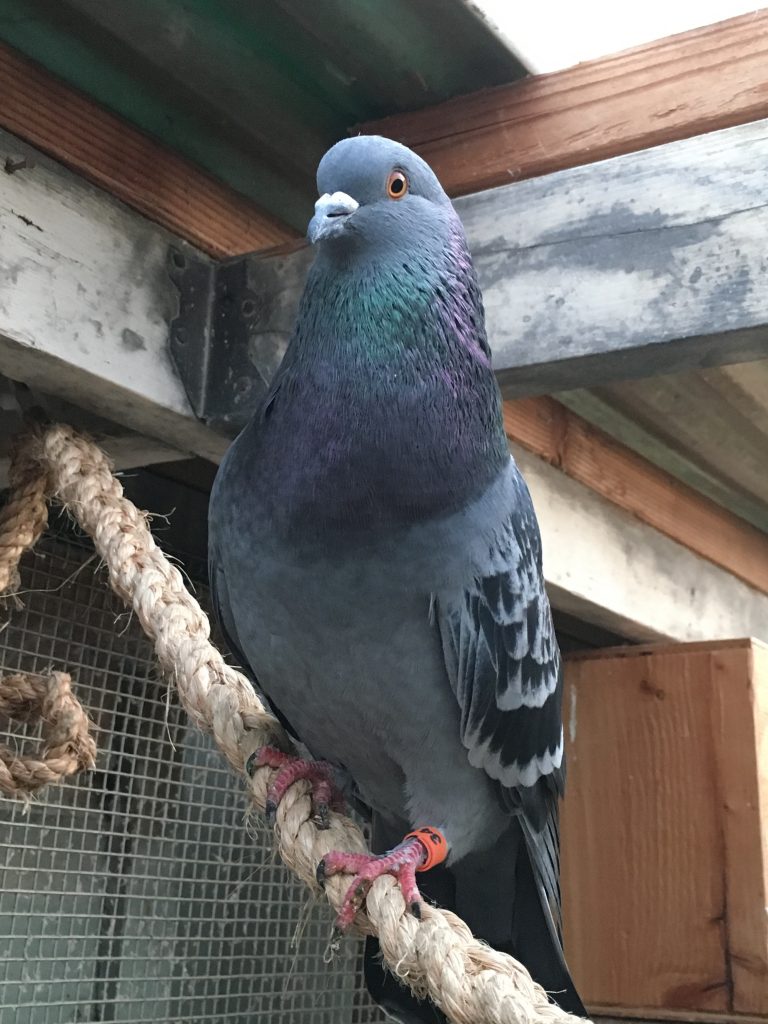
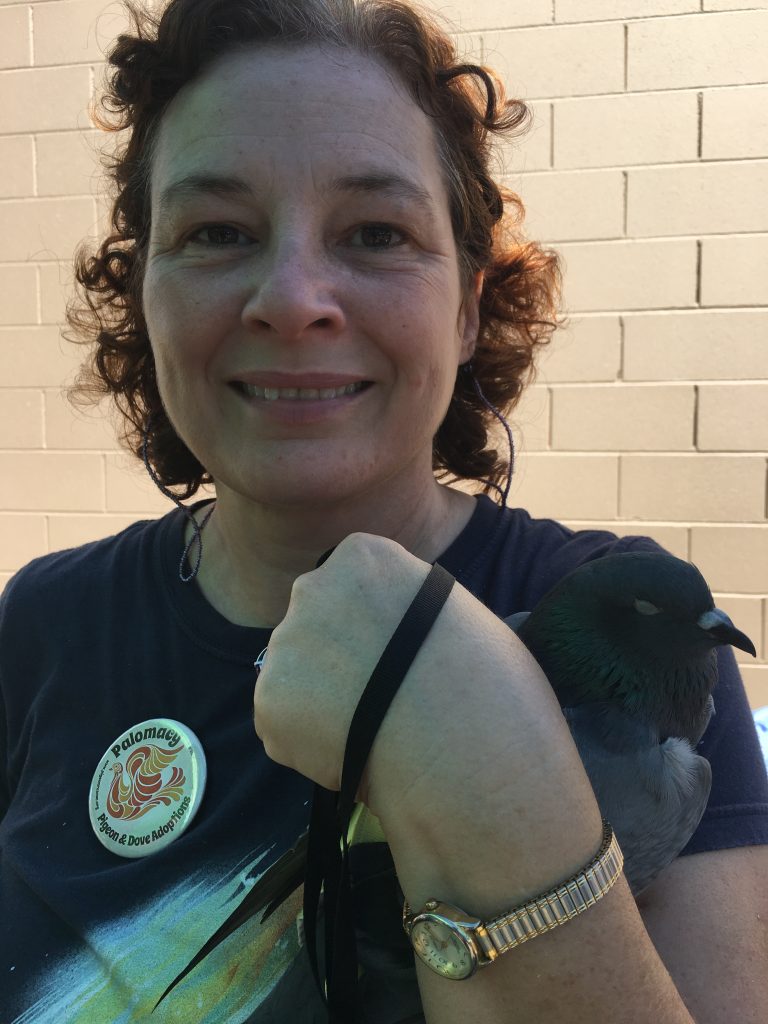
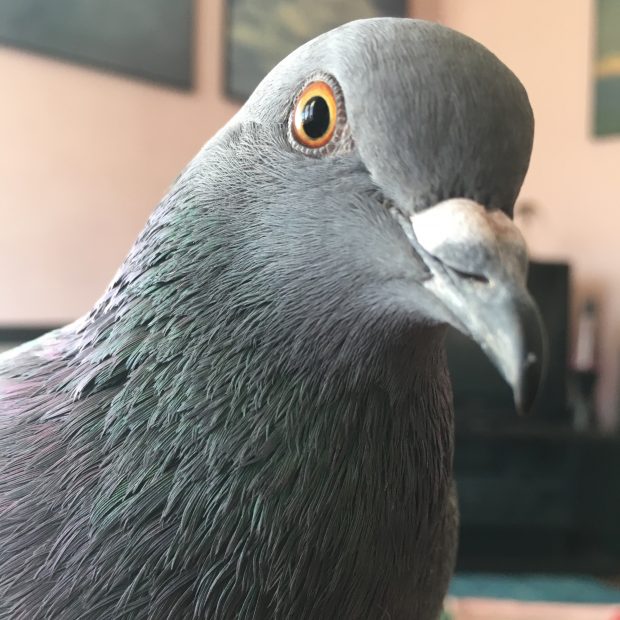
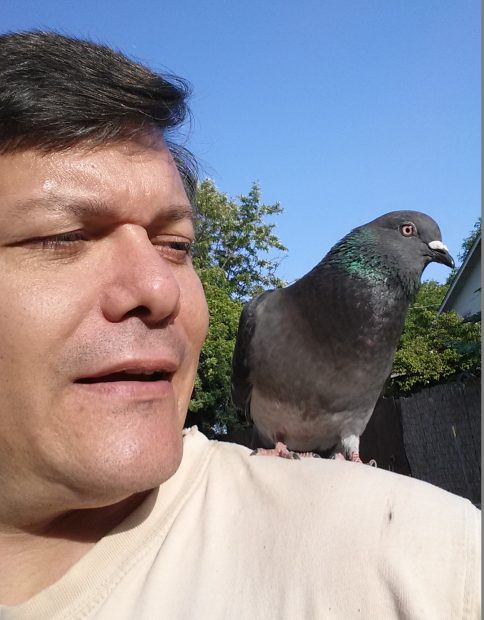
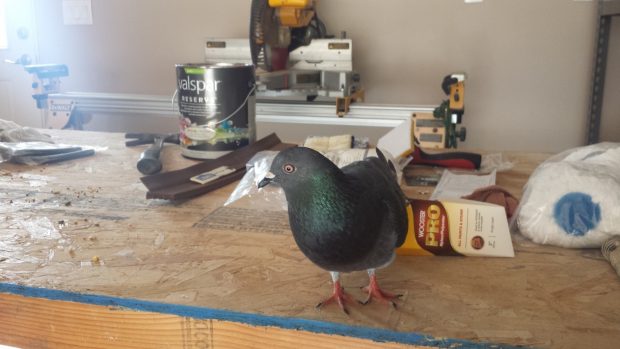
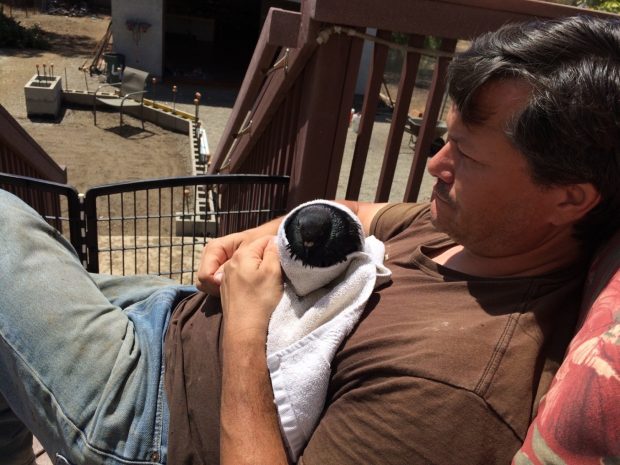
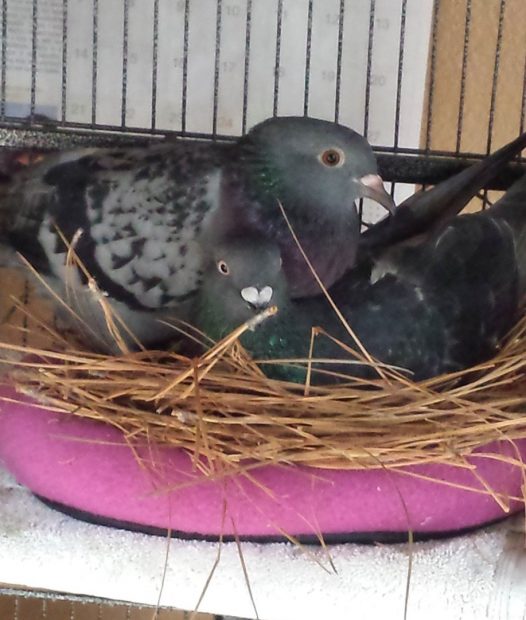
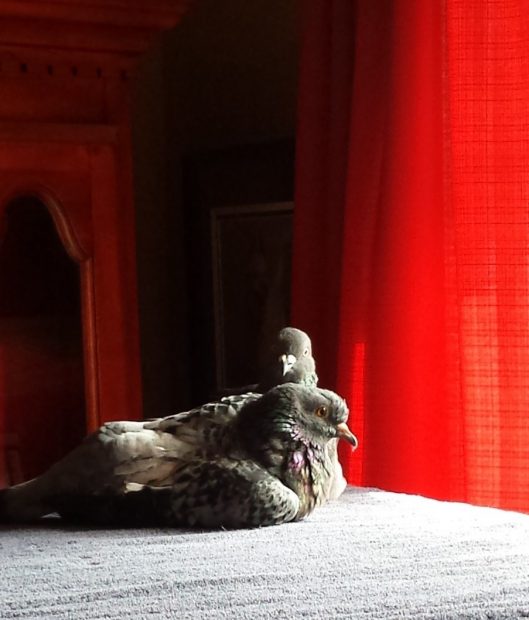

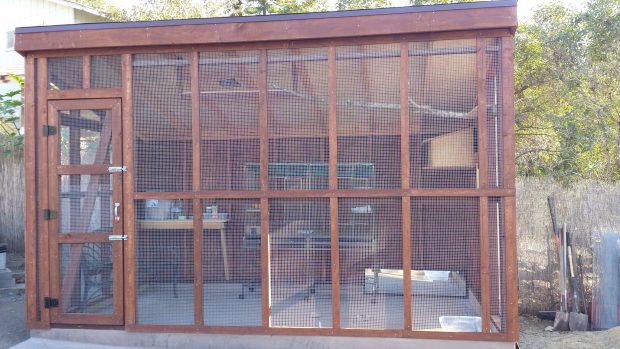
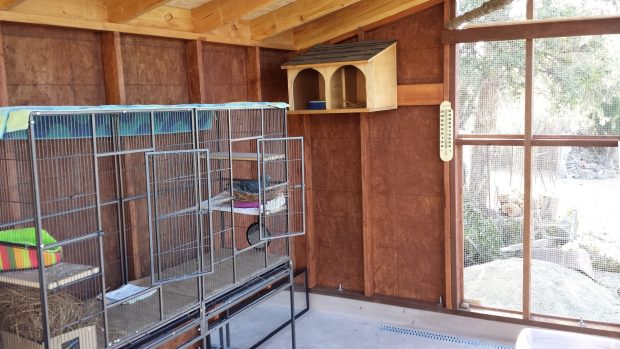

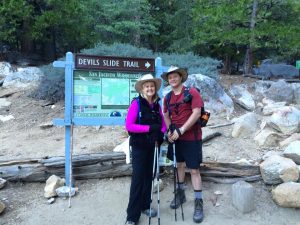 Chris and Bonnie Arvanitis have lived in Vista, California, coastal north San Diego County, for 40 years. Bonnie works as an executive secretary at a local hospital and Chris is an administrator of a condominium retirement community. They have one daughter, Chrissy and two rescue dogs named Buddy and Bella, both shepherds. They have always had rescue animals all their life, dedicated to providing a loving home to less fortunate animals. Chris enjoys photography, woodworking and hiking. Bonnie enjoys spending time with her dogs, and now her pigeon Petey, the beach and traveling.
Chris and Bonnie Arvanitis have lived in Vista, California, coastal north San Diego County, for 40 years. Bonnie works as an executive secretary at a local hospital and Chris is an administrator of a condominium retirement community. They have one daughter, Chrissy and two rescue dogs named Buddy and Bella, both shepherds. They have always had rescue animals all their life, dedicated to providing a loving home to less fortunate animals. Chris enjoys photography, woodworking and hiking. Bonnie enjoys spending time with her dogs, and now her pigeon Petey, the beach and traveling.